TOR H

Volume 35 | Issue 1 | Winter 2025
Torch
Volume 35, Issue 1, Winter 2025
Publisher Carey Baptist Grammar School
349 Barkers Road, Kew Victoria 3101 Australia 03 9816 1222
Editors Kelly Southworth and Hannah Cartmel
Graphic Design
Felix Lam and Kelly Southworth
Cover Photography
Gavin Blue Inquiries communityengagement@ carey.com.au
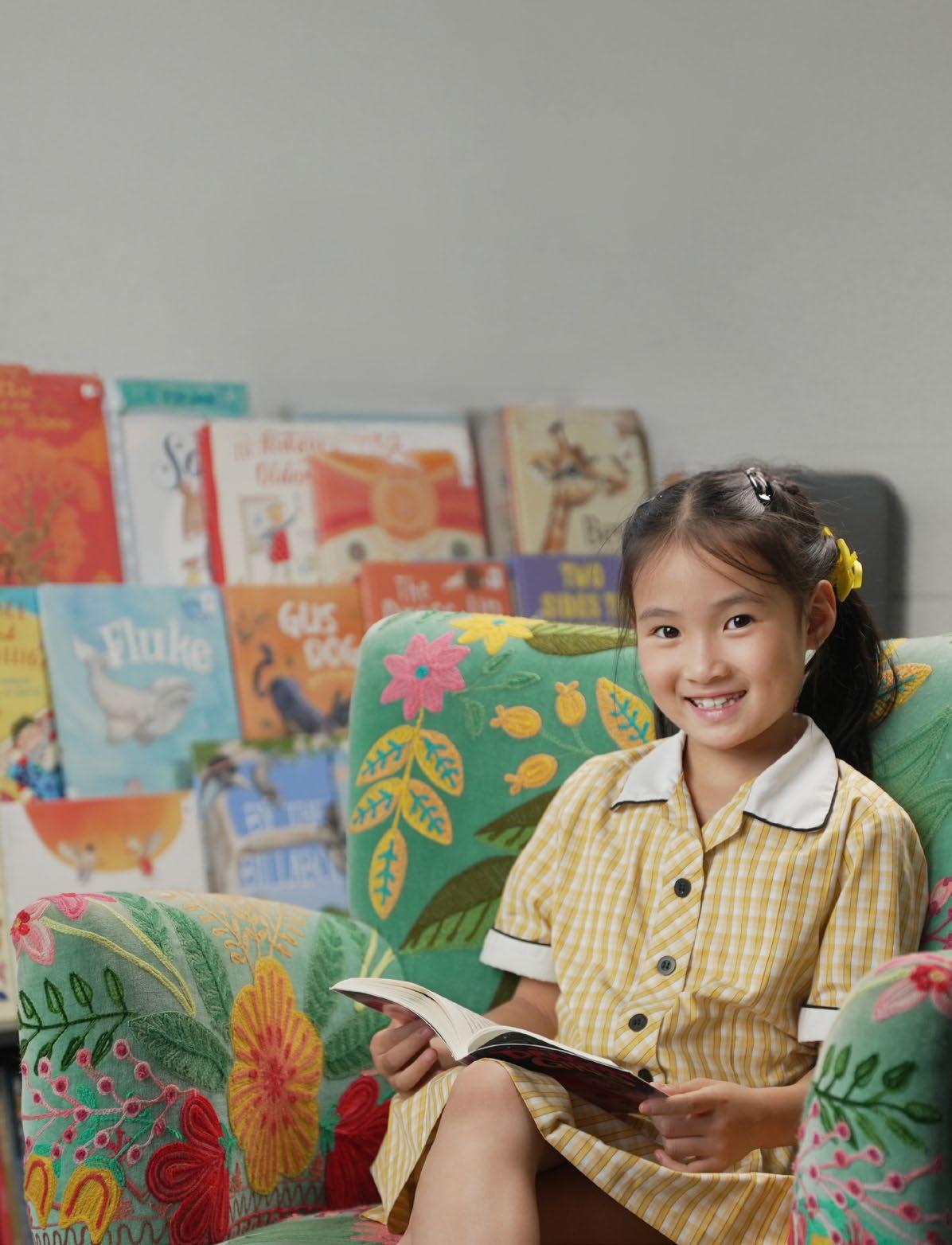
We acknowledge the Wurundjeri people, the Traditional Custodians of the land on which Torch was created, and we honour their continuing connection to land, sea and community. We respect their Elders past and present, and recognise the injustices endured by the First Nations peoples of this country.
school video!
We are excited to share a new video that showcases the incredible breadth of programs and opportunities our school offers. From academic excellence to co-curricular activities, we celebrate how all students can find their place at Carey.
Watch the video

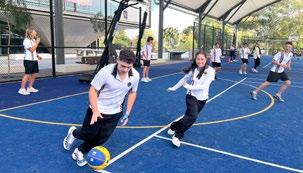

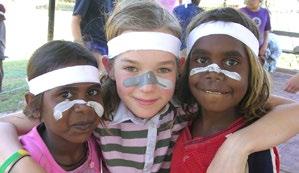
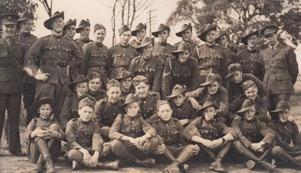
A positive path forward
Jonathan Walter Principal
At Carey, our vision is driven by our purpose: to inspire, nurture and develop students who are equipped for life and ready to create positive change. To fulfil our purpose, we must remain at the forefront of change, while prioritising issues that matter to our community.
This will require us to be agile, responsive and think differently about our operating model. Decisions must be made regarding our priorities now and into the future – how we might evolve and where we might increase or decrease investment of our resources.
We were immensely grateful to receive a significant response to a recent parent survey, helping us understand what is important to our parents and where they feel our resources should be directed. Participation was strong across all sections of the School with over 650 responses. This level of engagement is encouraging and provides us with valuable and robust feedback as we move forward. This survey will become part of an ongoing dialogue to ensure the School’s strategic direction is aligned with our community’s expectations in the years to come.
I was also pleased to meet with many parents in the subsequent parent discussion groups. These sessions were engaging and insightful and, along with the survey, will help shape our short- and long-term planning.
We look forward to sharing the key learnings with the community.
These positive trends highlight the resilience and optimism of our student body and reflect our ongoing investment and focus on supporting student wellbeing.
Youth surveys provide insights into our student cohort
Carey Middle and Senior School students continue to participate in a number of important national studies, including the Mission Australia Youth Survey (MAYS) and the Resilient Youth Survey (RYS).
The MAYS, now in its 23rd year, saw more than 17,400 Australians aged 15 to 19 participate in last year’s survey, providing a longitudinal view of the issues that matter the most to our young people. By listening to their voices and addressing their concerns, we can create a more understanding and supportive environment for our young people to flourish.
Across the country, the 2024 survey results showed that cost of living; climate change and the environment; violence, safety and crime; and mental health were the highest rated concerns
The MAYS data for Carey students revealed that they have shown an improved mental health outlook, with decreased levels of psychological distress. Fewer students reported barriers to achieving their work and study goals, and those citing mental health as a barrier have significantly decreased. Additionally, our students feel more in control of their lives, are less lonely, and are more optimistic about their future compared to their peers. These positive trends highlight the resilience and optimism of our student body and reflect our ongoing investment and focus on supporting student wellbeing.
The RYS, run in collaboration between the University of Adelaide and Resilient Youth Australia, looks at the selfreported resilience, wellbeing and mental health of our young people,
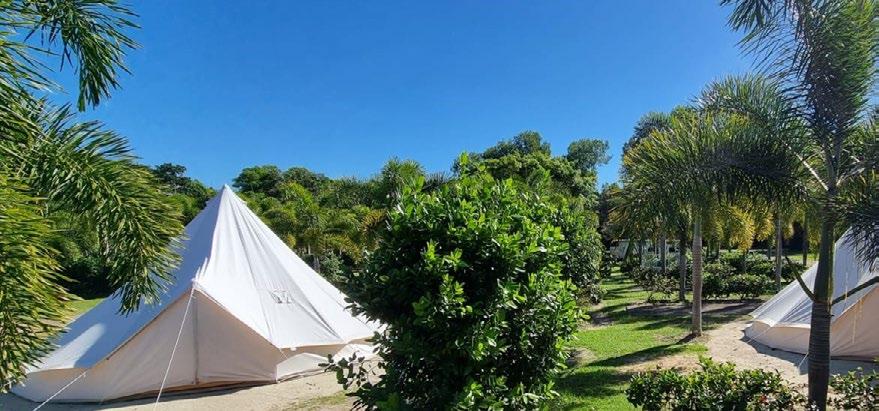
and is available to those aged seven to 18. The 2024 survey saw over 149,000 responses across the country.
The 2025 survey is currently underway, and so far we can see that, in comparison to their peers across Australia, Carey’s Years 7 to 12 students report that they are more hopeful, less depressed, more able to problem solve, and they experience better overall life satisfaction.
Of particular note is our Year 11 students who took part in Carey Zero last year are significantly less anxious than their peers across the country.
The Year 10 Carey Zero program focusses on building resilience, positive coping strategies and mindfulness techniques, while encouraging students to bond more deeply with their peers and mentors, connect with their communities and learn from and appreciate their natural environment. We are pleased to see the impact of this program reflect positively in these national survey results, as we have already seen it in person at school.
In Term 3, Carey’s Wellbeing Committee will share further survey results with parents and carers and action points from the RYS.
Historical abuse update
In what has been a challenging period for all in our school community, and with a commitment to transparency and change, I wish to update you on our ongoing response to historical abuse claims.
I have continued to meet with and listen to members of our community who have chosen to share their experiences with me. Carey is deeply committed to supporting those affected and engaging with them in a compassionate way.
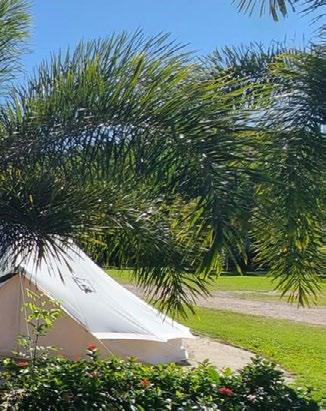
Over the coming months, the School is responding to matters that may or may not appear in the
Our students report that they are feeling:
more hopeful and optimistic less depressed more able to problem solve a better sense of life satisfaction fewer barriers to achieving their work more in control of their lives positive about their mental health less psychologically distressed as compared to their peers around the country.
media. We are mindful of respecting the privacy of those who have come forward and cannot comment on any individual case. However, I want to assure each member of our community of the School’s unwavering commitment to supporting those affected and prioritising their wellbeing.
I would like to reiterate our zerotolerance policy for abuse, and our commitment to ensuring that all students, staff and alumni are safe and supported.
We continue to work on specific initiatives to strengthen our ongoing response. This year the School has undertaken specialist training for all 32 appointed child safety officers who hold positions across all sections of our school. In addition, our Wellbeing Committee has engaged in a series
of workshops with Sexuality and Relationships expert Katrina Marson, who led the implementation of the Child Sexual Abuse Royal Commission Criminal Justice recommendations for the ACT.
We deeply appreciate your support as we take these important steps forward. We will continue to update you as we navigate these challenges and support all in our community. Together, we will ensure that our community remains a place where everyone can feel safe, respected and supported, enabling our students to flourish in their learning and development.
Pleaser visit our website at carey.com.au/historical-abuse to read more and to access contacts for advice and support should you require them.
Discipline, support and Olympic dreams
Matteo Annetta and Genevieve Walters 2025 School Captains
Jessica Hansen OLY attended Carey from Year 6 until she graduated in 2013. Always passionate about swimming, she trained and competed for MLC Aquatic Swimming Club throughout her time at Carey. She was also a member of Carey’s First Girls Swimming, Cross Country and Athletics Teams.
Jess made her debut for the Australian Dolphins swimming team in 2016 and competed at the Commonwealth Games in 2018. Also in 2018, Jess went to the Pan Pacific Championships, where she won gold.
In 2021, Jess competed for Australia at the Tokyo Olympic Games. Jess swam in the 100m backstroke and was a member of the Athlete Leadership Group.
Throughout her swimming career, Jess was focussed on finishing her university degree, a Bachelor of Sport Science/Business (Sport Management) with distinctions, and setting up her corporate path. Since retiring from swimming, she has built a successful career as a management
consultant at Strategy&, part of the PwC Network.
Carey invited Jess to speak to our Middle School students for International Women’s Day in March this year. Our 2025 School Captains, Genevieve and Matteo, took the opportunity to have a conversation with Jess about her experiences in elite sport, the struggles and triumphs of competition, and what she has learnt throughout her journey to becoming an Olympian.
Success isn’t linear. It looks glamorous from the outside, but my journey had setbacks, injuries and doubt ... I knew I had to believe in myself and surround myself with the right people.
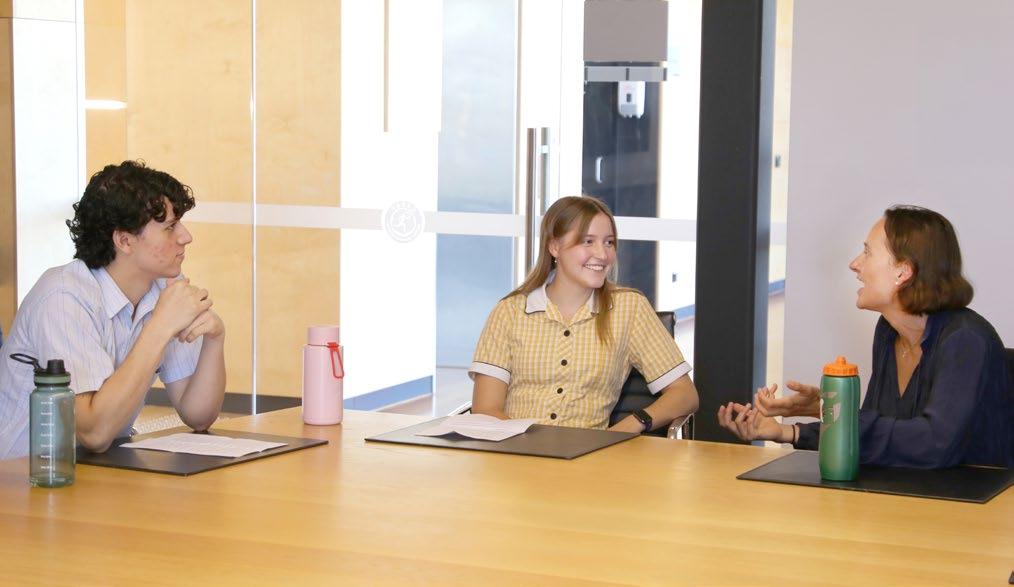
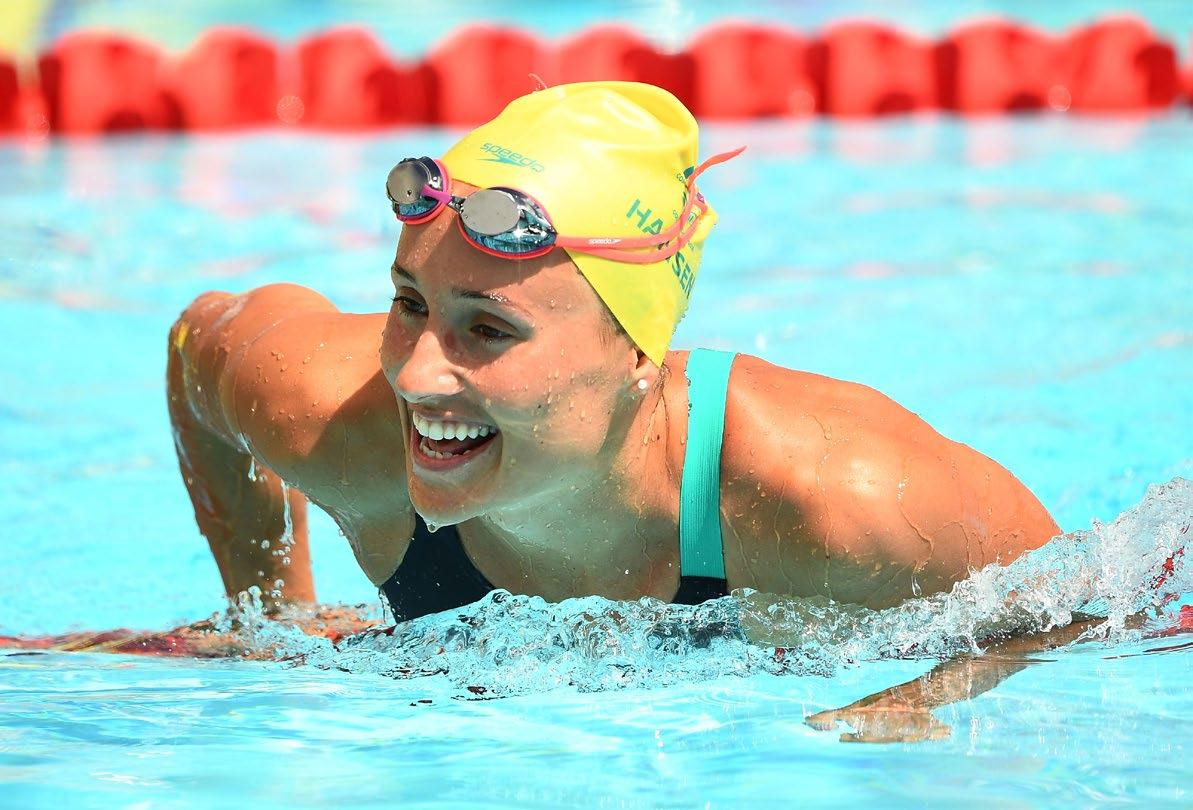
Matteo: Coming back to Carey for the first time in a while, what stands out to you?
Jess: The flashbacks are flooding in, especially those at lunch and hanging out with my friends. I distinctly remember House Music in Year 12; everyone in Steele was so close. I wasn’t musically talented, but it was fun. Carey still feels like a warm hug.
Genevieve: Yeah, sometimes a smell or sound just takes you back.
Matteo: We saw that you were Sport Captain and Swimming Captain. Did that influence your path into professional swimming?
Jess: Swimming started young for me. As a young kid, my parents emphasised community and sport. Carey allowed me to explore lots of sports, which kept things balanced. I wasn’t always
focussed on competition – I loved the technique. Playing different sports helped me avoid injuries, even when I was training up to nine times a week in Year 12. Being involved in lots of things, including leadership roles, gave me perspective and helped me figure out who I was outside the pool.
Genevieve: I see that at Carey too. Playing water polo helped my soccer.
Matteo: It’s a cultural thing here –everyone does a bit of everything.
Jess: Exactly. I don’t think people thought of me only as ‘Jess the swimmer’ and, looking back, I really appreciate that.
Matteo: Do you think that helped you enjoy swimming more?
Jess: For sure. Doing other things gave me mental space. When I returned to the pool, I felt refreshed and ready to
focus on my goals and what I needed to do at training.
Genevieve: Did training impact your schoolwork?
Jess: Yes, but in a good way. I had to be disciplined and use time well to ensure my study was effective given my other commitments.
Jack Joslin, Head of Sport and Activities (drops in): Just wanted to come and say hi! Thanks for coming! What are you doing now?
Jess: Working in the corporate world at PwC! Desk life is a shift from training. Coming back to Carey makes me feel like there could be a day where I become a teacher. And I’m engaged – to another Carey alum no less! My fiancé, Bruno Consalvo (2011), and I
argue about which House our future kids would be in – Steele vs Moore!
Matteo: What advice would you give your younger self?
Jess: Success isn’t linear. It looks glamorous from the outside, but my journey had setbacks, injuries and doubt. My Olympic dream started young, but I didn’t fully commit and believe I could actually make the dream a reality until after school. Once I did, I knew I had to believe in myself and surround myself with the right people.
Matteo: Any career highlights?
Jess: My best memories always come back to the people, and sometimes winning. A moment that stands out was at the 2012 Age Swimming Nationals. I was part of the MLC Aquatic medley relay team who went up against the big Queensland teams, and we won. It was a moment I realised that it doesn’t matter who you are, if you believe in yourself, anything is possible! Making the Olympics after missing out on the 2016 Olympic team by 0.02 seconds was a massive moment. Seeing my partner crying in the stands after the race made it all hit home.
Matteo: What was the 2020 Tokyo Olympics like?
Jess: Wild. It was during COVID-19 and was so surreal and strict. But at its core, it was still just a swimming competition, in a 50m pool. In terms of emotions, I felt them all – nerves, joy, disappointment. But it wasn’t just about me. My roommate, Emma, was swimming unbelievably well, winning heaps of medals. It was important to me to be a supportive friend, and that meant putting my emotions aside until the end of the Games.
Genevieve: Did you get to enjoy Japan?
Jess: Nope, we were kicked out straight after. But I’m okay with that – I just see it as part of my Olympic experience. Following the Games, I had to process my emotions and the concept of retirement slowly. It took me 18 months. But I knew in my gut that I was done.
Genevieve: What advice would you give to young athletes facing setbacks?
Jess: Let yourself feel it. Wallow if needed, but while you’re wallowing make sure you do things that bring you joy. Then, when you’re ready, come back

to your ‘why’. For me, it was always the question, ‘Can I be better?’ Motivation isn’t constant, but discipline is key. Just show up. One coach told me, ‘Discipline is what you do when no one’s watching’. That really stuck.
Matteo: Does showing up help bring back motivation?
Jess: Absolutely. Consistency brings momentum.
Genevieve: Routine keeps you going.
Jess: Yeah. And something as simple as making your bed at the start of the day is a win. And when the day doesn’t go as planned, you come home to that small success.
Matteo: Did you ever struggle to separate your identity from swimming?
Jess: Yes, that’s one of the hardest things. When I missed the Olympic team, it felt like I had failed as a person. But my time at Carey helped me see myself as more than just an athlete. I had school, a job, friendships. I also worked with a psychologist to separate self-worth from performance
Genevieve: I feel the same. With something intense like rowing, it’s important to leave it behind when you’re done.
Jess: Exactly. It’s the same with school results. Give it your best, and if it doesn’t go to plan, you find another way.
In Year 12, Jess was Sport Captain and Captain of the First Girls Swimming Team (pictured, Jess is in the front row, fourth from the right), as well as being a member of the First Cross Country and First Athletics teams.
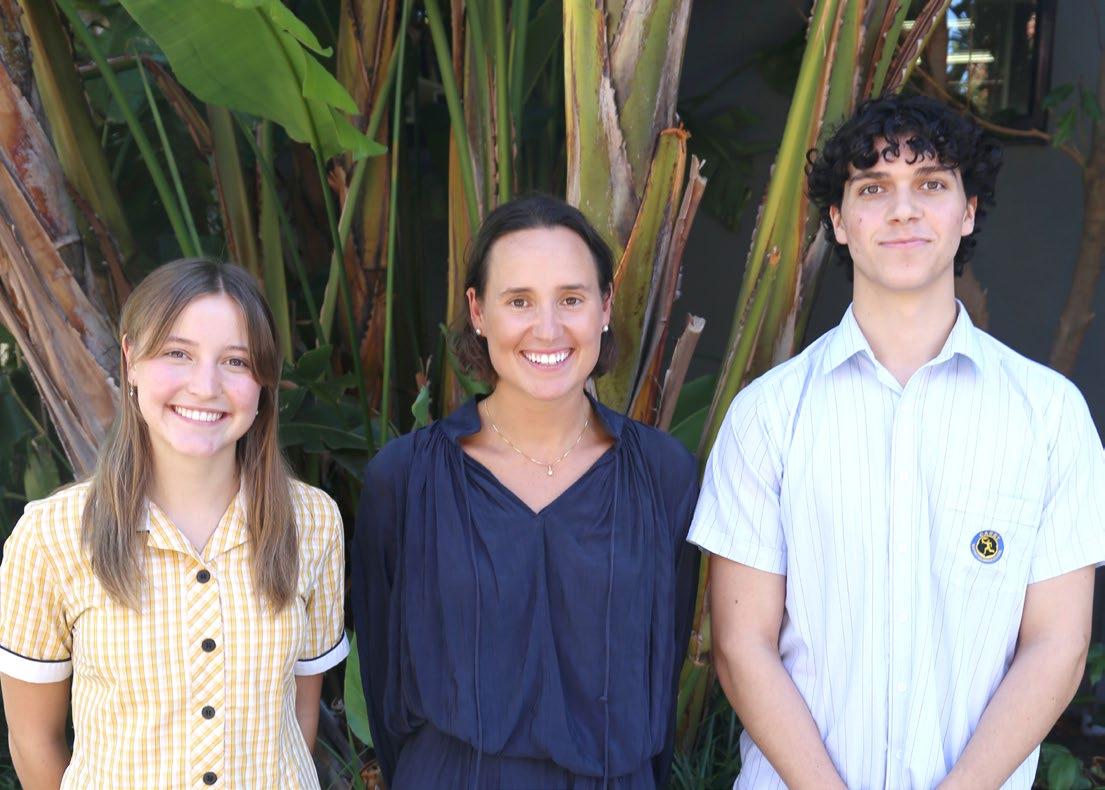
Once I realised the Olympic dream was very real, I broke it into years, months, weeks and even daily goals. That kept me grounded in the present. One metaphor I used regularly was about fireworks: don’t let them off too early; save them for when it counts.
Matteo: Were you always competitive across all areas of your life?
Jess: Gosh, I guess I was. I wanted to be the best at everything – best athlete, best friend, best person. Even now, after a tough day at work, I’ll see my Olympic rings tattoo and be reminded that I can achieve anything I put my mind too, and being the best version of me is a mindset that carries through in everything I do now.
Matteo: How did you approach goal setting?
Jess: It wasn’t about setting lofty dreams and leaving them there. I had to commit. Once I realised the Olympic dream was very real, I broke it into years, months, weeks and even daily goals. That kept me grounded in the present. One metaphor I used regularly was about fireworks: don’t let them off too early; save them for when it counts.
I also found having a team around me helped to hold me accountable.
Genevieve: Having separate goals in different areas is key. We have you in this year for International Women’s Day, so I want to ask if there are any women in sport who inspire you?
Jess: My first female inspiration was Emma Snowsill. She won gold at the 2008 Beijing Olympics in triathlon. But, primarily, the women that inspired me were in close proximity because I knew their stories, struggles and triumphs. These are friends not only in swimming but other sports.
Genevieve: Over your career, have you noticed changes in how women are represented in sport?
Jess: Yes, it has changed; although, in swimming, it’s quite equal, especially at elite level. There has still been a big push to educate male coaches about
the female body and how it changes within a monthly cycle. We still have a long way to go, but it’s improving. Overall, I did feel incredibly well supported by both male and female teammates.
Matteo: What would you say to a young woman hoping to pursue sport seriously?
Jess: Build your team, set your goals and stay disciplined. But you only achieve those goals and dreams when you believe in yourself.
Matteo: You’ve given us a lot to think about. Thank you so much.
Genevieve: We really appreciate it Jess, thank you.
Jess: It’s been great! Carey is an amazing place with very talented and grounded humans so stay connected after you leave – everyone has a story and a journey.
Celebrating International Women’s Week at Carey
Kaushini Fernando Alumni and Community Manager
This year, Carey reimagined its traditional International Women’s Day breakfast into a week-long celebration to engage more members of our school community. With the UN Women 2025 theme of March Forward, our goal was to create opportunities for students, staff, alumni and parents to come together, reflect on gender equality and celebrate the achievements of women in all areas of life.
International Women’s Day is a vital occasion as it highlights the systemic inequalities that women continue to face worldwide. While progress has been made, disparities remain in education, employment, leadership opportunities and safety. By shining a light on these issues, we foster awareness, encourage dialogue and inspire action toward a fairer, more equitable future.
A panel of influential Carey minds
One of the significant events of the week was an Alumni and Community International Women’s Day Dinner at Studley Park Boathouse, where guests heard from a panel of remarkable voices from the Carey community.
The panellists discussed a broad range of issues, including the theme of March Forward, systemic change in social culture and workplaces, and the role of men and allies in achieving equity for women. ‘International Women’s Day isn’t just a women’s issue,’ said Francis Goh at the event. ‘It’s about women supporting women and, equally, men supporting women. Allyship is critical.’
The issue of performativity versus meaningful change was of particular interest to the audience and panel members. ‘It’s not enough to talk about
change – we need action, transparency and accountability to truly move forward,’ said Mary Wooldridge. ‘The time for performative gestures is over.’ Mary, who leads WGEA in driving gender equality in workplaces and ensuring that women and men are equally represented, valued and rewarded, goes onto explain that it’s not until we see the tangible difference gender equity initiatives make in people’s careers and lives and the opportunities they have that the work becomes meaningful.
Frances’s organisation, One Roof, is a community for entrepreneurial and career-driven women to network and motivate each other in a supportive and empowering environment. Frances explained that encouraging more women into leadership positions is good for business. ‘Women-led businesses tend to outperform in revenue,’ she
Our Alumni and Community International Women’s Day Dinner panel members

Frances Goh (2006)
Carey alum; our 2021 International Women’s Day guest speaker; and Co-Founder and Head of Community and Growth at One Roof.

Hon. Mary Wooldridge
Carey Board member and
past parent; former Minister for Mental Health, Community Services and Women’s Affairs; and CEO of the Workplace Gender Equity Agency (WGEA).

Angus McKay
Carey Board member and
past Carey parent; former CEO of 7-Eleven Australia and current executive chair and CEO of Bapcor.

Elise Elliott current Carey parent; journalist, television and radio presenter, and podcast host; and our emcee for the night.
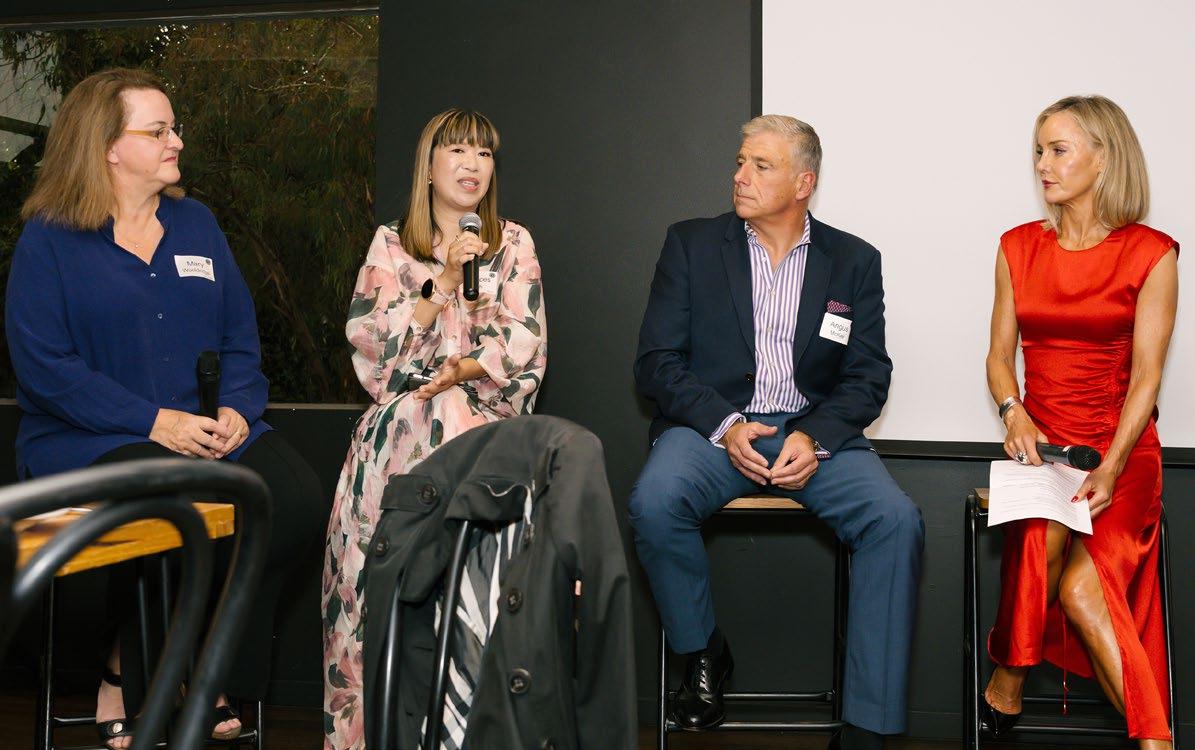
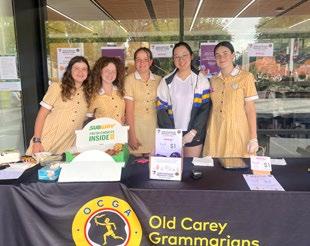
said. ‘Investing in women isn’t just the right thing – it’s smart business.’
In the businesses Angus McKay has led throughout his career, he has worked toward the goal of ensuring equal opportunity for women through education and training for his hiring teams. ‘It’s about ensuring balanced shortlists and removing bias in hiring – setting up the right systems so the best candidates shine through,’ he explains. ‘And the goal then is to make sure we’re creating workplaces where people thrive – where joy, respect and opportunity belong to everyone, regardless of gender.’
More highlights from the week
After months of planning with a Senior School student working group, a diverse and vibrant program was developed to spark meaningful conversations across all year levels. The week was packed with activities, inspiring discussions and fundraising efforts that left a lasting impact on our community.
Further opportunities for our community to celebrate International
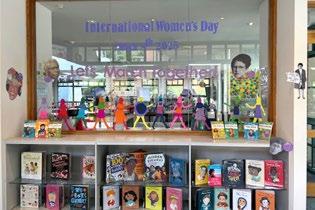
Women’s Week at Carey included:
• the Middle School Awards Ceremony, featuring Olympian and alum Jessica Hansen (2013) as guest speaker
• student-led lunchtime fundraisers for Emerge, an organisation supporting women and children affected by family violence (pictured above left)
• gratitude letters, which saw students from across the Middle and Senior School writing heartfelt notes to the significant women in their lives, reflecting the spirit of personal connection and appreciation
• badge-making, book displays (pictured above) and scavenger hunts in the libraries
• a Wall of Inspiring Women and statistic cards that encouraged important conversations about the gender gap, empowerment and leadership in our everyday lives
• music in the Quad, featuring songs by female artists and empowering and energising anthems.
Throughout the week, the emphasis was clear: equity is not about giving special treatment; it’s about ensuring
fair opportunity and breaking down systemic barriers.
We extend our heartfelt thanks to our Year 12 working group leaders – Angela, Genevieve, Freya, India, Tiffany and Isobel – for their creativity, leadership and tireless efforts in bringing this vision to life. Special thanks also to Jo Leech for her invaluable support and to Erin Boyd, Community Support and Events Co-ordinator, who organised so much behind the scenes.
Finally, we acknowledge the Old Carey Grammarians Association for their generous sponsorship, helping us to expand our reach and impact this year.
As we look to the future, the words of Frances Goh stay with us, ‘People move stronger together: you’re never alone – there’s strength and momentum in marching forward together.’
Thank you to everyone who participated in, contributed to and championed International Women’s Week at Carey. Together, we are making strides toward a future where every student – every person –can thrive.
The Kew and Donvale campuses unite to form one Carey Junior School
Kelly Southworth Editor
In 2025, Carey Baptist Grammar School launched an exciting new chapter in its Junior School experience by unifying the Kew and Donvale campuses. With Kylie Baxter, previously Head of Junior School –Kew, being appointed to head both the Kew and Donvale Junior School campuses, Carey has reshaped Junior School to have one vision, one curriculum and one exciting future.
‘There were many reasons to develop this new combined structure,’ says Kylie, Head of Junior School. ‘It allows us to build community relationships, bring together the strengths of both campuses into one consistent and enhanced Junior School experience for all students and ensure our approach is efficient and sustainable.’
Developing a new approach to Junior School
This has also involved a restructure of the Junior School leadership team, which is outlined on the following page. A unified executive and admin team now oversees operations at both campuses. Kylie splits her time across both campuses, along with Emma Chiera, Deputy Head of Junior School – Personalised Learning, and Mel Brown, Deputy Head of Junior School
Sophie Fisher, Deputy Head of Junior School – Head of Donvale Campus: As our two campuses come together, we’re building a community that benefits from sharing resources and working together.
– Student Wellbeing; and Sophie Fisher has been appointed Deputy Head of Junior School – Head of Donvale Campus to oversee the day-to-day functioning of the Donvale campus.
‘This year is all about aligning our two campuses, each with its own unique strengths and traditions,’ says Sophie.
Over the first half of 2024, Carey’s School Leadership Team began the process of redesigning the Carey Junior School with a view to develop a more integrated model. The goals the Junior School leadership team employed during the process of merging the Kew and Donvale campuses included:
• building a greater sense of belonging for each student and their parents regardless of campus
• ensuring a consistency of experience
• integrating wellbeing and learning to ensure personalised growth for each student
• distributing responsibilities across campuses
• responding to the changing educational landscape in a sustainable and agile way.
‘As our two campuses come together, we’re building a community that benefits from sharing resources and working together,’ Sophie says.
‘Together, we can offer even better opportunities for learning, strengthen relationships and create a more unified school culture. Whether it’s new teaching methods, unique co-curricular opportunities or stronger connections within the community, we’re making sure both campuses work together to benefit all our students.’
How it’s going so far
The focus throughout Term 1 was to assist our Junior School community with adapting to the change, focussing on collaboration and growth. This approach has involved input from students, staff and parents, and required developing clarity and a shared vision among the new leadership team, especially for those whose roles scope across campuses.
But even within the first term, the benefits had already begun to emerge.
‘The immediate benefits that we have seen so far include sharing expertise across both campuses,’ explains Kylie. ‘We have also seen the crosscampus connection opportunities for our students, including the Year 6 leadership day and the Year 2 Outdoor Ed program.’
Including students in the transition has been an important part of the process.
‘They’re not just along for the ride – they’re leaders shaping the future of our school,’ says Sophie. ‘By involving students in decision-making and encouraging them to take on leadership roles, we’re helping them develop essential skills and a sense of ownership over their own learning.’
Through this new approach to Junior School at Carey, leadership will continue to assess how our combined Junior School can evolve to ensure the best outcomes for our students into the future.
The Junior School Leadership team

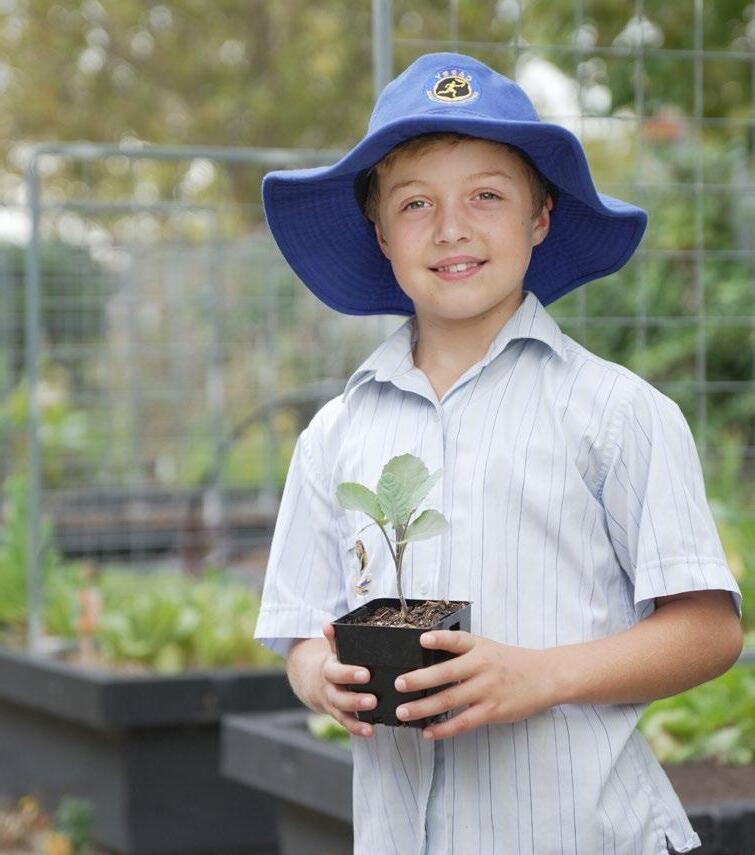











Leaders of Learning


Welcome to the Junior School
Sarah Broadbent
Linda Fothergill President of the JSPAK Vice-President of the JSPAD
The Junior School Parents Associations play an essential role in uniting our community and fostering connections, especially throughout the period of transition into the new Junior School at Carey (read more on the previous pages).
Kicking off the school year with an exciting bang, the Junior School Parents Association – Donvale campus (JSPAD) and Junior School Parents Association – Kew campus (JSPAK) organised welcome picnics at both campuses to bring the community together with fun activities, delicious food and great vibes!
At both events, the sun shone brightly, creating the perfect backdrop for an afternoon filled with fun, laughter and connections with friends new and old.
At the Donvale campus, the annual JSPAD welcome picnic was hosted on the Flat, in the beautiful bushy parkland adjoining the School. The serene environment highlighted how lucky the students are to be surrounded by expanses of green open spaces.
Impromptu cricket and soccer matches were quickly in full throw, alongside other students playing with their friends and making new ones. The line for the much-anticipated ice-cream truck snaked through the crowd of the many families and friends gathered on picnic rugs enjoying the afternoon sun.
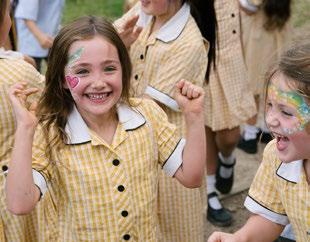
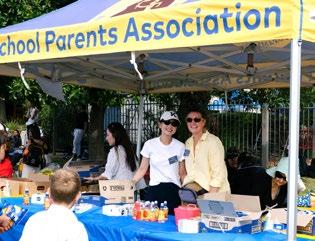
The JSPAD hopes to build upon the strong sense of community at Junior School – Donvale campus by bringing families together at many events throughout this year.
Over at Kew, families were entertained by the talented circus performers, face painters and an enthusiastic DJ, ensuring there was never a dull moment. Students enjoyed an afternoon tea – including the everpopular Zooper Doopers – while parents were treated to hot drinks as they took in the cheerful atmosphere. It was heartwarming to see so many families come together, along with our dedicated leadership team.
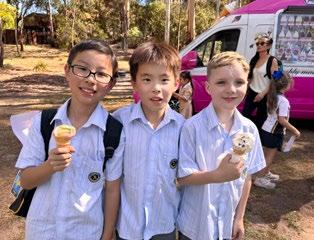
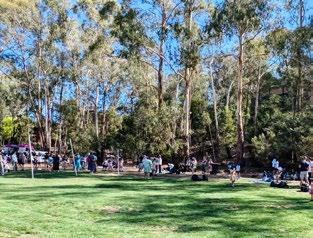
A huge thank you goes out to all volunteers at both events for their efforts and time. Thank you also to the Carey Maintenance team and Community Engagement team, and for the support of the Junior School leadership team, without which these events would not happen.
Additionally, the JSPAK thanks Fiona Sexton for her wonderful photography and the Swap Shop for their generosity in making the event possible.
The picnics were undoubtedly a great success, offering a relaxed and funfilled welcome to 2025 in the Junior School. Here’s to many more wonderful events to come!
Shining a light on our path to net zero
Michelle McIntosh Project Manager, Finance and Operations
Last year, Carey proudly took another major step towards achieving the ambitious goal of net zero emissions with the installation of two significant solar energy systems: one at our Zero site in Mission Beach and the other at our Kew campus. These projects are key milestones of our Sustainability Plan and demonstrate our ongoing commitment to taking real, measurable action on climate change.
At Zero, a new 39.6kW solar array was installed, designed to supply a substantial portion of the site’s energy needs through clean, renewable power. Meanwhile, at our Kew campus, a larger 90.5kW system now sits atop our Performing Arts Building, quietly capturing sunlight and converting it into electricity that powers our learning spaces, offices and community areas.
Together, these systems will generate 100s of 1000s of kilowatt-hours of renewable energy each year, reducing our reliance on grid electricity and cutting down on carbon emissions. Early results are extremely promising. In March, our solar systems delivered exceptional performance, generating 10.9 megawatt-hours (MWh) of clean energy, reducing our emissions by an impressive 22.33 tonnes.
Importantly, these installations are not just about infrastructure – they are a symbol of our educational mission. Students now have the opportunity
to learn firsthand about renewable energy technologies, environmental stewardship and the role innovation plays in building a sustainable future. Our solar systems will be integrated into curriculum opportunities across year levels, helping to inspire the next generation of environmental leaders. This project marks a significant milestone on our journey to net zero, but it is only the beginning. Over the coming years, Carey will continue to roll out further sustainability initiatives aimed at reducing emissions, promoting responsible resource use
and demonstrating leadership in climate action. With the addition of the existing Toonallook system – a 25kW solar array made possible by donations from our community – Carey now has 155.1kW of solar capacity powering our school activities across multiple campuses. By investing in solar, we are not only harnessing the power of the sun, we are reaffirming our commitment to a cleaner, brighter and more sustainable future.
Check out our 2024–27 Sustainability Plan here.
Solar by the numbers: total impact so far this year
Energy generated: 21.8MWh
Carbon emissions reduced: 31.88 tonnes
Equivalent to:
• 1741 trees planted
• powering 1200 average Australian homes for a day


Carey shines at the IB Visual Arts Exhibition and Awards Ceremony
Frédérique Petithory Acting Deputy Head of Senior School
In February, Carey was proud to host two important annual events to celebrate the International Baccalaureate (IB) students of Victoria and Tasmania: the IB Awards Ceremony held at Federation Square and the IB Visual Arts Exhibition held at the Glen Eira City Council Gallery. The Awards Ceremony honours students who receive an IB score of 40+, which this year included 22 Carey students from the Class of 2024. As well as a number of outstanding performances from Carey’s musical ensembles, members of the 21 IB schools in attendance heard
from Carey alum and IB graduate
Hannah McNichol (2014), who is a PhD Candidate, Cookson Scholar and Research and Communications
Lead at the Australian International Development Network. Hannah spoke about how the community service aspects and the international focus of the IB, along with Carey’s focus on developing the whole person, set her up well for the future. Having studied her undergraduate degree at the University of Oxford, Hannah expressed how the opportunity to study abroad and access a diverse curriculum gave her a strong foundation for all her
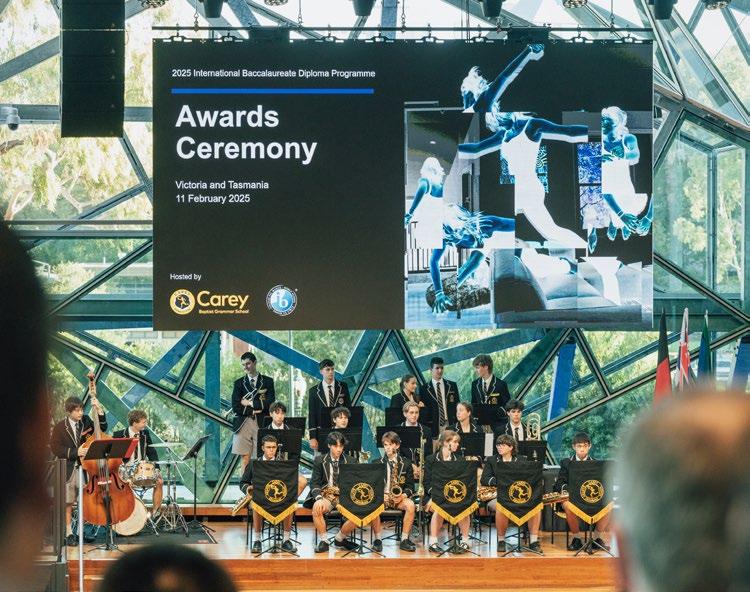
endeavours post-school. You can read more about Hannah in the Winter 2024 edition of Torch, which can be viewed on our website.
In addition, exceptional artworks were featured in the IB Visual Arts Exhibition, and this year four Carey students’ artworks were displayed: Derek Ding (cover image), Olivia Morris, Rachel Su and Lucy Wynne. Hosting this year allowed us the opportunity to highlight our Class of 2024 and hear from another Carey alum, Bronwen Main (2012), for whom IB Visual Arts was particularly formative.
Bronwen is an artist, designer and environmentalist who has made a name for herself through her sustainable practices and elegant furniture designs. Having graduated from Carey after completing the IB Diploma Programme in 2012, Bronwen addressed the audience at the opening night of the IB Visual Arts Exhibition, sharing her reflections on the impact of the IB on her life, the value of curiosity and what creativity means to her.
IB Awards Ceremony attendees were serenaded by Carey senior ensembles.
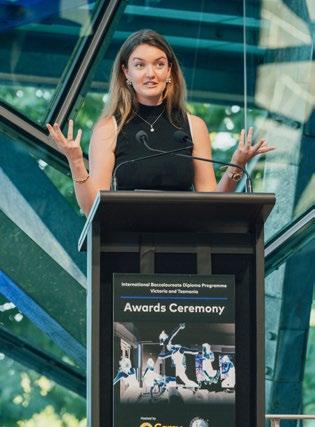

We are proud to be able to offer the IB as a pathway in the final two years of our students’ school journeys, and we are proud of not only our IB graduates’ outcomes in the Programme, but also of their life achievements since.
The IB Diploma Programme encourages students to become active, compassionate lifelong learners by fostering open communication built on mutual understanding and respect. It provides a holistic education that nurtures the development of the whole person. While it promotes cognitive growth, the IB also emphasises the social, emotional and physical wellbeing of students. The Programme values
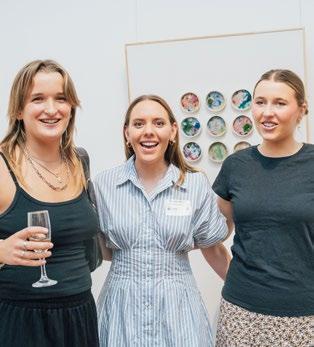
opportunities for students to engage as caring and active members of their local, national and global communities. IB students are encouraged to embody attributes such as being inquirers, knowledgeable, thinkers, communicators, principled, openminded, caring, risk-takers, balanced and reflective. These qualities reflect a wide range of human capacities and responsibilities that extend beyond academic achievement. They represent a commitment to helping students learn to respect themselves, others and the world around them.
Find out more about the IB.

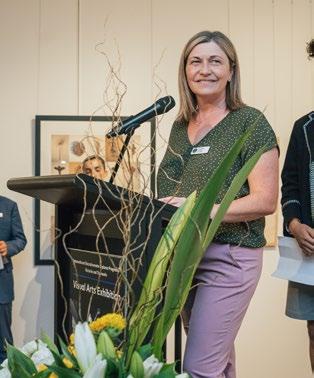

Learning by doing in VET
Amanda Siva Careers Practitioner and VET Co-ordinator
As part of our commitment to personalised learning and setting our students up for success beyond school, in 2025, we introduced two new subjects for VCE students: VET Business and VET Sport, Aquatics and Recreation.
VET, or Vocational Education and Training, provides students with applied learning opportunities while completing their VCE. Students engage in competency-based learning which enables them to develop skills relevant to a range of industries. Not only are students exploring industries they are interested in, but competencies can be used on resumes to articulate skills and abilities to employers.
VET subjects contribute to a student’s ATAR in two ways: either as a scored subject like other VCE subjects, which is the case with our Business and Sport, Aquatics and Recreation subjects, or as an incremental bonus on a student’s ATAR when the study is non-scored.
Previously, Carey students choosing a VET subject would have to travel offsite to TAFE, or other schools, but both Business and Sport, Aquatics and Recreation are taught onsite at Carey. The courses are incorporated into the timetable so students don’t have to worry about clashes or making up for classes they may miss during their offsite VET classes.
‘I love sport and wanted to do the subject, but I didn’t want to travel for it,’ says Tom, who is undertaking VET Sport, Aquatics and Recreation.
‘When I saw that it was onsite it really encouraged me to do it.’

Jacquie: What I love about this course is the practical, realworld skills that are directly applicable to the workplace.
VET Sport and Recreation
Rhys Adams, passionate Health and Physical Education teacher at Carey, says he’s been looking forward to teaching VET Sport, Aquatics and Recreation and is excited for its future.
‘The VET subject follows a similar pathway of a mainstream VCE subject, with formalised assessments (SACs) and mid- and end-of-year examinations,’ Rhys says. ‘However, its point of difference is the demonstration of competence. At the end of the two years, they’ll receive a study score, but complimenting this will be additional certificates, accreditation and industry experience.’
Students will receive a Certificate III in Sport, Aquatics and Recreation, and they also have opportunities to gain practical skills and industry experience.
‘We get all these different qualifications, like we’ve already done Occupational Health and Safety and First Aid,’ says VET Sport, Aquatics and Recreation student Will. ‘We’re going to do umpiring, coaching and lifeguarding as well. I chose the subject because I’ll be able to use these further on in life and they’ll be an advantage when I’m looking for a job.’
As well as receiving their umpiring training from the AFL and umpiring an Auskick match at the MCG, the
students are looking forward to an upcoming excursion to Cricket Victoria, where they will walk through the high performance centre and speak directly with coaches. Other highlights from the course include developing a specialised gym training plan and bringing all of these skills together in regular 3x3 basketball matches.
For students who prefer getting out of the classroom, being active and working closely with their peers, VET Sport, Aquatics and Recreation is an engaging and useful pathway. Ned, in the same class as Will and Tom, says when he finishes school he’s looking forward to using the certificate he will gain from the subject.
‘I want to get into coaching or personal training,’ he says. ‘Definitely not an office job!’
VET Business
The VET Business course at Carey is taught by Jacquie Youssef, who also teaches VCE Business Management and Year 10 Business Studies.
‘What I love about this course is the practical, real-world skills that are directly applicable to the workplace,’ Jacquie says. ‘VCE Business Management is very theoretical, with a lot of content and case studies, and that can be quite overwhelming. In VET Business, it’s more tangible, more collaborative and beneficial for many learners as they can see what they’re learning right in front of them.’
At the end of Year 12, students will receive a Certificate III in Business and a study score to contribute to their VCE, as well as units of competency. These include workplace safety, communication skills, sustainable practices, time management and inclusive practices in the workplace.
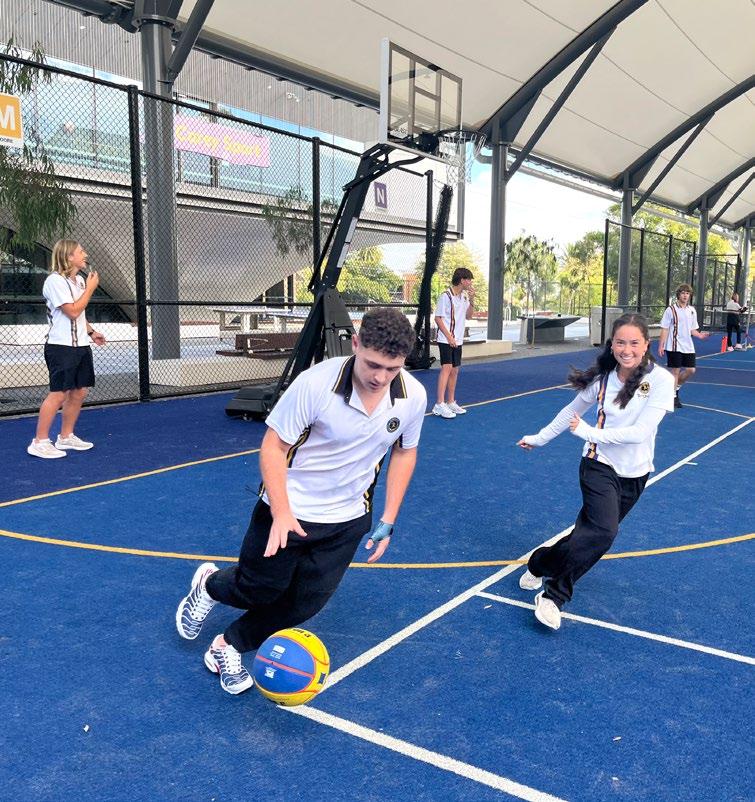
‘We took the students to WISE Employment, which is a not-for-profit organisation that helps people living with disabilities find meaningful employment,’ says Jacquie. ‘The students got to explore the offices, learn about disability in the workplace and identify barriers to accessible employment.’
Students can choose to study more than one VET subject in their VCE, and VET Business is the perfect accompaniment to other units for entrepreneurial students.
‘After I finish school, I want to be a beautician,’ says VET Business student Bella. ‘I’m also taking VET Beauty and I already have a business doing eyelash extensions. The skills I’m learning from both units are really relevant.’
Bella’s classmate Chiana is less sure of the path she wants to take beyond school, but knows that it will be in
business. ‘I think Business will help me get a grasp on how business works and what it would be like to pursue after school,’ she says. ‘I’ve got a few different paths in mind, and I chose subjects that I’m really interested in to help me decide what direction I’ll go.’
In addition to preferring the practicality of VET Business, Chiana says the learning environment is what she loves the most about the class. ‘The group work has been the highlight,’ she says. ‘The class is really good and we have a great teacher, and I think the environment can really shape the subject. Miss Youssef makes it really fun and engaging!’
VCE VET courses can benefit any student who is craving a more handson approach to learning. Find out more information by talking to your Career Practitioner or at https://www.carey. com.au/our-schools/senior-school/vce
Helping kids who can’t face school
Richard Crawshaw (1995) Carey alum and founder of Can’t Face School
Since graduating from Carey, I have never stopped learning.
In addition to pursuing several tertiary study opportunities, I explored the world and learnt about different cultures and ways of living. I did much of this living and travelling overseas with my wife and our two children, and it included heaps of camping, learning new languages, making new friends and fully embracing other cultures. We are now settled in the Macedon Ranges where I can cruise around on my ride-on mower, watch the dog chase the rabbits and chop wood to my heart’s content.
My time overseas also allowed me to gain global perspectives throughout
my career, having worked in schools and universities in China, the United Kingdom, France and Australia. My career has evolved significantly throughout this time. Since my first classroom teaching job, I have been a leader of youth re-engagement programs, an assistant principal at a school for autism, and a regional manager at the School Improvement Division here in Victoria. I now have my own business, Can’t Face School, which provides professional and effective support for families who have a child not engaged in school, and I spend my time presenting in the community and to schools on the topic of school avoidance and how to change this.

Can’t Face School
The issue of kids not being able to attend school has been around for a long time. However, it was completely exacerbated after the 2020–21 school closures as a result of the COVID-19 pandemic, which very clearly shows up in current school attendance data, not just in Australia but globally.
Having worked in this space for over 15 years, and having been involved with many successful programs and ace professionals who solve these problems, I had families reaching out for support during this time, asking for me to help their child attend school face-to-face again.
I am passionate about encouraging young people to feel excited about who they are and what they can achieve in their life, and schools are great communities to ignite these dreams. Knowing that so many young people out there are currently missing out on this was a huge driver for me to found Can’t Face School.
This work isn’t about ‘attendance data’; it is much deeper than just looking at the numbers. At Can’t Face School we instead use the term ‘engagement data’, which re-frames this by looking at what is actually going to re-engage these students who are battling anxiety.
We work with parents and carers, teachers and health professionals to get students who are resisting school to feel positive about returning.
I am passionate about encouraging young people to feel excited about who they are and what they can achieve in their life, and schools are great communities to ignite these dreams.

We have a team of passionate education professionals and school reintegration specialists who work to understand, address and resolve the issues that cause a child to resist school and help get them back on track.
Carey’s impact
When reflecting on my time at Carey, I think about the concept in education of the Seven Cs of Lifelong Learning, and how actively engaging in school allowed me to develop these: the ability to analyse critically and form well-reasoned judgements, generate innovative solutions by thinking creatively, encompass my ability to express myself clearly through various forms of communication, and collaborate with others to achieve common goals. Carey definitely helped me build character through the many opportunities it offers, particularly related to ethics, empathy and responsibility. The friendships I formed with students and teachers through activities like Outdoor Education, hockey and various music groups had a huge impact on my confidence and
connection to my life. This massively influenced my learning and my commitment to making school possible for others, and I’m so grateful for those moments and ongoing friendships.
Carey has always had a proactive and engaging approach to education and when strong teacher/student relationships are in place, it proves time and time again to be a powerful tool to help young people feel a sense of belonging in a school community. I still remember those teachers who had my back and looked out for me – you know who are! – and I hope the students that my team and I work with will be able to look back one day and feel the same.
For more information about school refusal and Can’t Face School’s approach to re-engaging students in school, visit cantfaceschool.com.au
If you would like to find out more about how Carey can support your child, please contact Allan Griffin, Head of Student Wellbeing, at allan.griffin@carey.com.au or current families can learn more on CareyLink at https://www.careylink.com. au/sites/studentdevelopment/
Some things to consider if you have a child who is refusing school:
• Start by strengthening relationships.
• Be involved and listen to your child by acknowledging that this is a challenging time for both of you, but you are going to do something about it.
• Encourage routines and social contact outside of the house where possible.
• Allocate time to address selfesteem and self-confidence.
• Don’t force or rush the process, but work slowly and consistently to develop the road map back to school (don’t be afraid to seek help if you need).
• Schedule ‘cup filling’ time by doing something positive together each week.
• Contact your student’s classroom teacher or mentor for support.
1000 cups of tea and 20 years of connection with Robinson River
Michael Nelson Head of First Nations Partnerships
First Nations peoples often have a different concept of time. Instead of a straight line from past to present to future, people of Aboriginal and Torres Strait Islander cultures often perceive time as cyclical and interconnected, influenced by natural cycles like seasons and lunar phases. This cyclical perspective emphasises the importance of the present and the continuous return of events, rather than a focus on a fixed past or future. Although this year marks 20 years of the relationship between Carey and Robinson River, it might be better to look at our connection with the Robinson River community by a series of different measures: maybe the 1000s of cups of tea between Carey staff and community members; the intensity of joy and smiles as the students play, connect and share their worlds; or, most profoundly, the number of stories told and re-told at dinner tables and around camp fires about the experiences of those involved.
It is certainly evident the connection has profoundly impacted both communities, fostering mutual respect, creating lasting friendships and building trust and understanding. Many Carey students who have been a part of the program reflect on the power of drawing on their learning on Garawa Country in all sorts of situations.
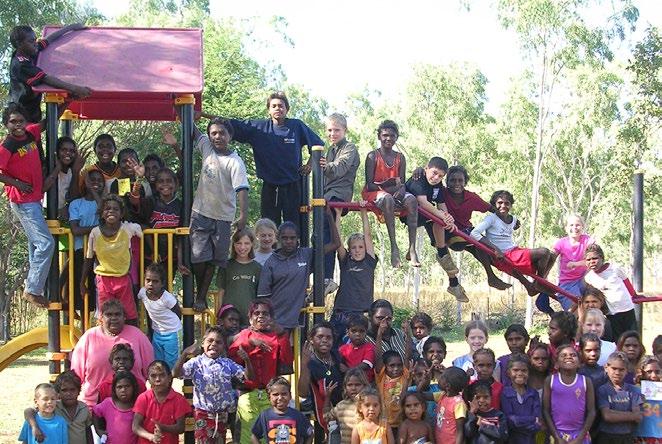
The relationship began with Junior School Kew in 2005 and has since evolved into a growing Year 9 cultural connection program, including multiple groups travelling to Robinson River each year. Over the journey, Carey staff have lived for extended periods in the community, and students particularly enjoy hosting Robinson River students in Melbourne in September. One of the most significant impacts of this connection has been the relationships that have developed. Carey students and staff have had the opportunity to immerse themselves in the culture and daily life of the Robinson River community.
This immersion has allowed them to gain a deeper understanding of First Nations cultures and perspectives, including the importance of family and connection to Country. Through the Indigenous Studies elective in Year 9, we have observed that learning from and experiencing First Nations cultures is transformative, often starting a journey into First Nations allyship, outreach, participation in Indigenous Studies at university and working in the not-for-profit sector. For the Robinson River community, the benefits have been equally profound.
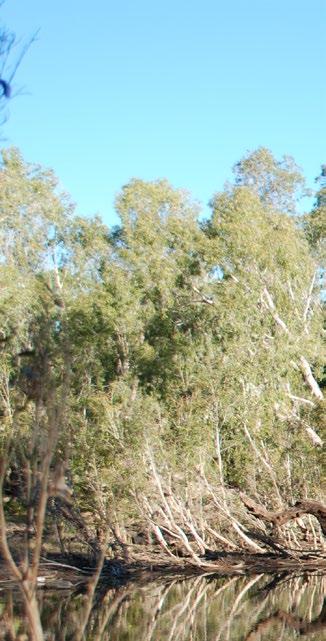

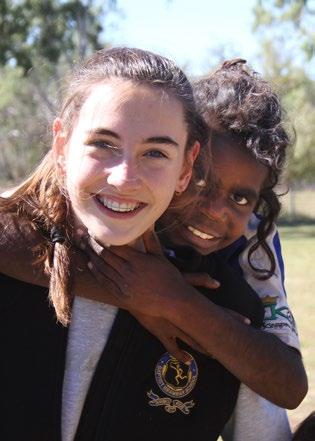
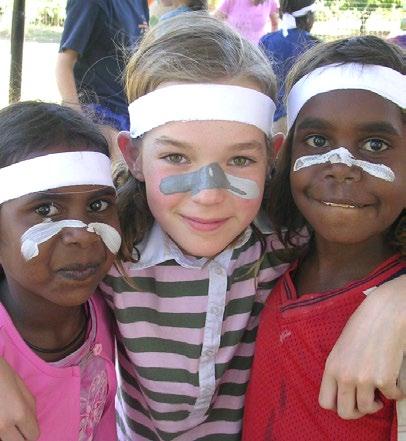
The visits from Carey have brought a sense of excitement and joy, as well as practical support. When Carey staff have lived in Robinson River, they have worked closely with the local school to support educational initiatives and provide opportunities for Robinson River students to study in Melbourne. This has helped to build learning pathways and foster a love of education among the Robinson River students, showing them the possibilities that education can offer.
The exchange program has also had a significant impact on the educational outcomes for students in both communities. For Carey students, the experience of visiting Robinson River has been an integral part of their education, helping them to develop empathy, cultural awareness and
a sense of social responsibility. They have learnt the importance of being advocates and allies for First Nations Australians, and many have carried these lessons into their adult lives.
For the Robinson River students, the support from Carey has helped to enhance their educational experiences and outcomes. The encouragement and belief in the power of education have been crucial in helping these students to see the value of their schooling and to aspire to further education and personal success. The visits from Carey have made learning fun and meaningful, helping to build a sense of self and success among the Robinson River students.
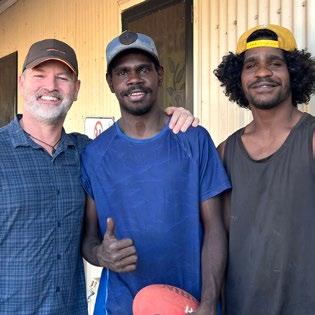

The two of us: Grace Angwin and Nicholas Jones
In this Torch feature, we highlight some of the dynamic duos in our community. Grace (2010) and Nick (2006) met at School and later fell in love – with each other and with Paris. They have since built a life there together.
GraceOur journey to each other, and to Paris, in many ways began at Carey. I started French classes in my first year of high school, and I particularly remember being inspired by the French film Amélie.
My love for France began on a study tour with Carey in the summer of 2009 to 2010. I spent six weeks living with a French family in Grenoble in southeast France. The parents and their daughters took me in as their own, and I have never looked back. I came home from Grenoble with a wider vocabulary and determination to keep going. I studied VCE French with a wonderful teacher, Leanne Guillon, who really pushed me to excel. I then majored in French and Politics as part of my Arts degree and Masters of International Relations at Monash University, during which time I spent a semester abroad in Lyon. My career in the Australian Public Service began soon after, but I always had a burning desire to return to France.
My husband Nick and I met through my older brother, Jack. We all attended Carey. Jack’s mates were always getting together at our parents’ house, and I became friends with many of them, including Nick. The friendship became romantic and we got married in 2019, and Jack was Nick’s best man. Nick is a wonderful partner and always supported my passion for France. As an opera singer, he works a lot with
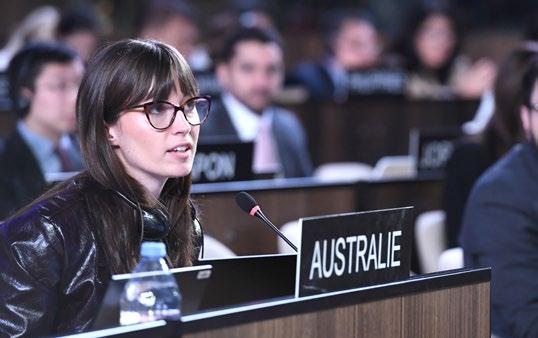
Nicholas: For both of us, Carey was a place that fostered a desire to explore broader horizons.
languages, and we had always shared the desire to live overseas. He had only spent about 36 hours in Paris in his life when he agreed to move there with me, which I think is very brave.
We pursued the adventure in 2023, sold most of our belongings and took eight suitcases on a plane to Paris. I didn’t have a job and he didn’t have a visa. Two years later, we are living a life we never thought possible. Nick is singing at La Bastille with the Opéra National de Paris and I am working at the Australian Embassy as a member of the Permanent Delegation of Australia to UNESCO. Our French is improving, we eat baguettes every day and I have a view of the Eiffel Tower from my office floor.
I am so lucky to have remained close with my French family who hosted me
during the study tour with Carey. They helped us get settled in Paris and find an apartment, and we have visited them multiple times over the years, along with my parents. Coming up on 15 years together, Nick and I feel very grateful to Carey for the role it played in our early history.
Studying a language is hard work and it can be difficult to picture how it might be useful in the future. But learning French has completely expanded my world and enabled me to pursue a life that I am grateful for every day. Living overseas is humbling and gives you an entirely different perspective on the world. While Paris is far from Melbourne, the spare room in our apartment is regularly occupied by Australian visitors (who are subject to a vegemite tax on arrival).
Nicholas
When I think back on our lives together, our time at Carey and our decision to move to Paris in 2023, I feel immensely proud of how far Grace and I have come.
I fell into performing arts accidentally. While I was very sporty, most of my Carey friends were involved in the plays, musicals and choirs. I snuck into my first Carey musical in a small role, and the musical’s director, David Crawshaw, saw promise in my voice. He encouraged me to take voice lessons from his then wife, Susan (d. 2014), and apply for a place at the Victorian College of the Arts. Despite my limited experience, I received a place in the classical voice department. I also had the opportunity to audition for a professional production, The Pirates of Penzance for Opera Australia, in my first year of study. Thus began my long relationship with the national opera company, and my unexpected love affair with the operatic art form.
My time in the Carey performing arts community created a closeknit group of friends who remained so for years after graduating. Late nights playing GameCube (and later, poker) at Jack Angwin’s house were a common occurrence, and these gatherings were how I met his sister, Grace. What started as a casual friendship inevitably grew into a strong connection. We went through some tough periods: I was offered performance opportunities that were often away from home, and Grace’s studies led to an exchange in France. But these challenges also pushed us to become better communicators and build resilience as a couple.


2017 proved a pivotal year for us. After building my career in the opera industry, I was offered a handful of contracts in Sydney with Opera Australia. Grace received an offer for a dream job in Canberra at the Attorney General’s Department. We decided to uproot our lives and move to different cities, providing each other with the courage to take on big challenges and support each other’s dreams.
The ensuing years saw us travelling, marrying and eventually settling in Sydney. The COVID-19 pandemic was a huge test for us. Its effects on the performing arts industry were long lasting, and it forced us to rethink our goals, priorities and future. We had always seen an oversees move as being part of our future, and thanks to Grace’s love of France, we decided this would be our new adventure.
During our move, an opportunity arose to audition for a new artist ensemble at the Opéra National de Paris – one of the most important opera houses in the world. I managed to land one of seven positions among 650 applications for ‘La Troupe’. Through the challenges of expat life and administration, we’ve slowly forged a life and a sense of home in Paris. Grace has found herself in a wonderful job at the Australian Embassy and remains patient with my journey in grasping the French language. The evening pastel sunsets on the Seine with glasses of wine still have us pinching ourselves. For both of us, Carey was a place that fostered a desire to explore broader horizons: literal ones across oceans, unexpected ones to different career pathways, and the ones that lead into the exciting and the unknown.

Tiffany Liu
In a way, we go through school without actually understanding what it is we’re experiencing. But I think there’s something inherently precious about realising how eye-opening it was in hindsight. Now that I’m in Year 12 and looking back on the years I had throughout Junior, Middle and Senior School, I’ve come to have that exact realisation. Throughout my years at Carey, I’ve discovered so much about myself thanks to the opportunities presented here.
I began at Carey’s Donvale campus in the ELC as a stroke of fate – it was never planned that I would go to Carey, but my family heard about this amazing early learning program. It’s thanks to the immensely kind early learning teachers that I continued through to Junior School, very much enjoying the warmth I received from the community. It was then that I slowly started to try out other parts of the education that Carey provided.
There are so many facets to the Carey experience that I couldn’t possibly detail all of them here, but a few have made lasting impressions on me! Since Junior School, I’ve taken part in all sorts of music ensembles, eagerly participating in string orchestras and choirs, before finally ending up in the senior groups of Symphony Orchestra and Wind Symphony. They’ve been able to show me an entirely different world to the one I knew, such as the Centenary Concert in 2023 (pictured). Additionally, the bonds I’ve made with the teachers in the music department have been incredibly enriching, really making the experiences feel like home.
While music at Carey has been my companion as I grew throughout the years, I’m still discovering new things, even in this final year! CLOSA and my role as Community Captain were things that I hadn’t planned for, but it’s been life-changing even just in this first term. It was the first time that I realised that fundraising
at Carey was goal-orientated – we have a duty to the causes we support with our fundraising goal, and as one of the captains in this area, it is my responsibility to make this happen. I learnt how to use the school terminal, how to sell and market food, and how to plan a fundraiser with all its unique details like working with members of the school community who remain behind the scenes in the average student life. The direct connection to the Afghan Women’s Soccer Team and EatUp (our two main charities this year) has made the whole process so tangible – there are real people out there that we are helping and aiding as a community.
Carey has been such as constant in my life that I can’t remember what my life was like without it – the community welcomed me, and now I’m welcoming others as a senior student. As my time here comes to an end, I know instinctively that I will never forget how Carey has shaped me as an individual.
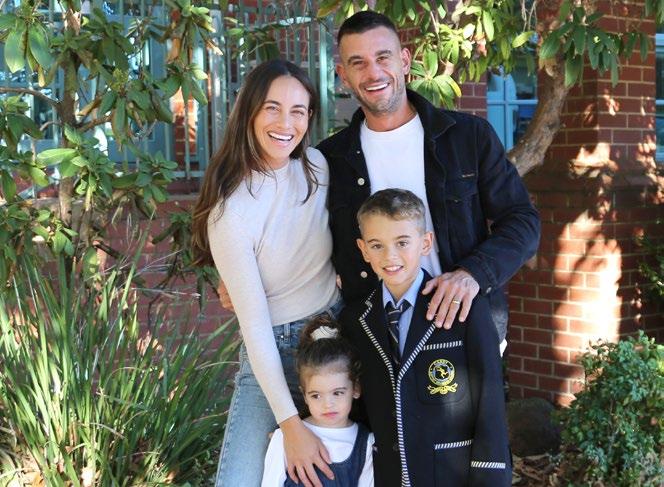
Luke Udorovic
I loved my time as a student at Carey. Spending countless hours with my friends at school was the best – I’m lucky to still be friends with many of them today. I also always loved being encouraged into leadership roles, whether it was House Captain in Year 12, a sport captain or a leader in another event. This also extended to competing with older year levels in House Sports Days, like running in the Year 12 relay as a Year 10, or even representing Carey in the Boys First Soccer Team as early as Year 9, which I did all the way to Year 12. These experiences filled me with confidence and an appreciation for hard work and collaboration.
After graduating, I went to Deakin University to study a Bachelor of Commerce, which is where I began mastering the craft of business management and marketing. Since then, I have been on a mission to create an fully independent music and entertainment eco-system – a broad range of creative businesses under the umbrella of Lucky Group. I am now surrounded by amazing people who share the same vision and belief
in what we are striving for each and every day. This includes one of my best friends from Carey, Chris Katsanevakis (2002), who is now my business partner and CFO of the company. Business always has its ups and downs. The COVID-19 pandemic presented some serious challenges across the performing arts industry, and we were hit, hard. Supporting my team with no income and trying not to go broke in the process was an incredibly stressful time. One saving grace over this period was the investment in our record label and its releases. We were lucky to have international success for Masked Wolf with their song ‘Astronaut in the Ocean’. This record has had billions of streams and helped us support everything.
A true highlight was being able to buy the family business at 170 Russell, AKA Billboard. This enabled my parents to retire and has been a really fun challenge to take on. Another massive high was selling 110,000 tickets to Good Things Festival in 2024 and 2025 consecutively, and 50,000 tickets to Ultra Music Festival!
I met my wife, Emma, in our uni days, and we’ve been together ever since. She’s a full-time mum to our little tribe of busy humans (small and large!) and is my biggest supporter. We make a great team.
It was a no-brainer for us to send our kids to Carey. Walking into the Junior School for Levi’s first day and being recognised by teachers who were there when I was a student was incredible. It is testament to the School and the type of community that is created here. We felt sure it was right for our family. Levi has been at Carey since Prep and is now in Year 3. He loves sport –soccer, in particular – and has made huge progress with some well-known academies around Victoria. I love training with him and watching him develop. He is an amazing little player and it’s great to have that shared passion. He is a fantastic big brother to Andi – their love for one another is beautiful. Andi took her first steps on Cluny Green and will start at Carey in the ELC soon. When I’m not at work or the gym, my favourite way to have some downtime is on the couch, cuddled up with my little ones and my wife.
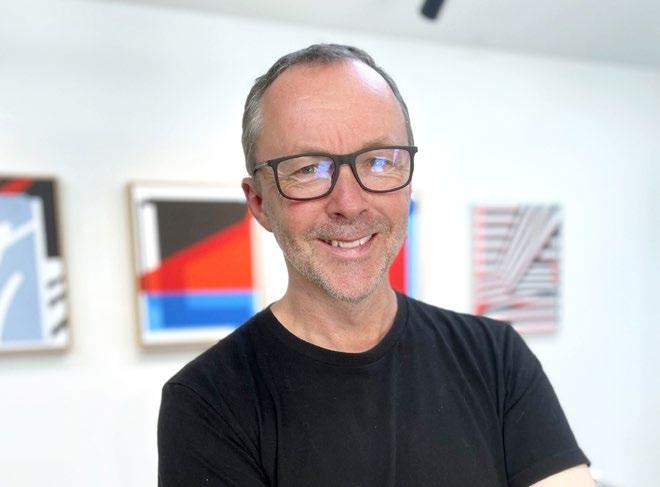
Finding space for creativity
‘Give me the child until he is seven and I’ll show you the man.’ – Aristotle I believe Aristotle was correct. When that Star Destroyer flew past the camera for what seemed like an eternity in the first moments of Star Wars in 1977, I was hooked. A love of sci-fi, maths and Star Wars stays with me today (even despite the lacklustre recent additions to the film franchise). The more dedicated nerds out there – or at least those with access to the internet – will understand where my nickname, Snootles, came from (a welcome upgrade from ‘Pommy’, mind you).
Now that we have that out of the way, I no longer need to answer the most common question I get when people find out I’m an artist: ‘Why do you call yourself Liam Snootle?’

Liam Stewart
The next most common thing I hear when people find out that I’m also a Maths teacher is, ‘Oh, I see, your paintings are all about Maths!’ Well, yes and no. They are definitely a celebration of geometry and angles, but they are just as much about creating harmony between life’s opposites: noise and quiet, hard and soft, logic and abstract, calculated and gestural.
I have always found space for creativity. Whether that be art or songwriting or even finding the perfect way to explain why Pythagoras was a cool guy. Being creative enriches the soul, it helps with problem solving, it reduces stress and it improves communication but, most importantly, it promotes innovation. I’m forever grateful for this and love that I can instil similar qualities in the students I teach, encouraging them to discover a creative outlet that stays with them through their lives.
My art practice has provided me with wonderful opportunities, like collaborations with Qantas, Craft Victoria, television shows, music videos and local councils, as well as local and overseas exhibitions. These could not have happened without my experiences as an educator but, equally, my skills as an educator are always enhanced by my creativity.
Yes, my life is busy, but I wouldn’t have it any other way. I can’t recall a time in my life where I wasn’t spinning a few plates and don’t envision a time where I’m not planning my next project.
If I could go back and ask my sevenyear-old self, ‘What do you want to be when you grow up?’ I’d probably hear myself saying, ‘I want to be everything.’ Check out more of Liam Snootle’s work on Instagram.
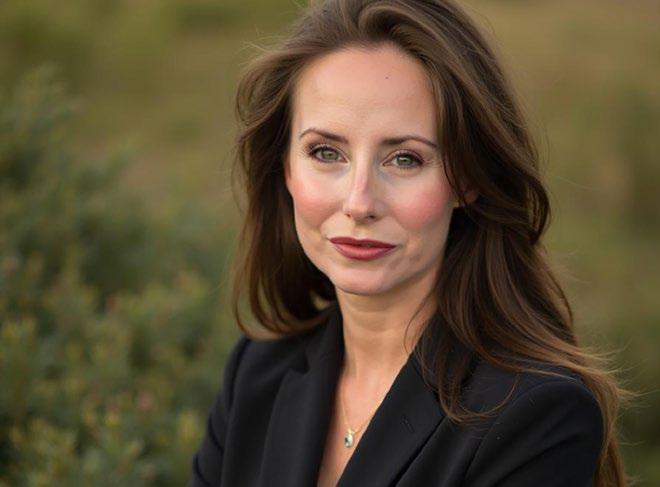
Clementine Bales
First Aid Manager
I started at Carey in October 2024 in the inaugural role of First Aid Manager, overseeing the team of nurses across all campuses and our compliance for First Aid in the workplace. It’s been exciting to review existing systems and identify opportunities for improvement, but, importantly, joining Carey has reinforced for me how powerful a sense of community and belonging can be.
When taking on a new role, you never quite know what to expect. Since joining Carey, I’ve been reminded of how vital the community you build around yourself is. Everyone at Carey has embraced my role, and every parent and staff member I’ve engaged with has made an effort to make me feel at home. It is true what Helen Keller said: ‘Alone, we can do so little, together, we can do so much’.
I’ve been fortunate to be part of a few different communities throughout my life – nurses, emergency services, local government – and now Carey.
It’s a feeling that is difficult to describe, but when you’re surrounded with that genuine sense of community, you feel connected to a shared purpose –supported, encouraged and inspired by the potential of what can be achieved together. It can be easy to forget how important that feeling is, and how much we should embrace it and seek it out in life.
Growing up, I would spend my school holidays on a farm in rural NSW with my grandparents. They were deeply involved in their community – doing philanthropic work with the local community hospital, supporting emergency service responses and being actively engaged with the church. From them, I learnt the value of family and the importance of creating a sense of belonging in the communities we create around ourselves.
In my early 20s, I began volunteering with the State Emergency Service (SES; pictured above at the Midsumma Pride March), which was one of the most challenging and rewarding experiences of my life. I had to learn

skills I had never imagined myself learning, like rooftop safety and using a chainsaw. The people I met became like extended family, always supporting and encouraging one another.
I became a Registered Nurse in 2021, and I was struck by the strong sense of community once again. In my work, I have met an incredible number of fellow nurses, and regardless of generation, the way we have trained or what we love to do outside of nursing, we all share a desire to help others and an ability to find humour even in the most challenging of situations.
Most recently, I worked in a Safety and Wellbeing team in government. Before that, I was involved in Workcover and, prior to that, the emergency services – all while continuing to work weekend shifts in a major hospital Emergency Department.
I feel incredibly lucky to be at Carey and to be part of this special community. I’m excited about what my future holds here and can’t wait to make more memories with all of you.
The gift of giving
Michael Lord Chair of the Carey Medal Committee
The Carey Medal Committee was thrilled to announce that Toni Joel OAM (1982) is the recipient of the 2024 Carey Medal. Toni is the co-founder and director of Tonic Australia and the founder of the Off Your Back winter coat drive, a charitable initiative dedicated to providing warm clothing to people in need during the colder months. In 2024, Toni was awarded an Order of Australia Medal (OAM) for her significant contributions to the community.
The Carey Medal represents an important commitment to community service by recognising people in our community making positive change. It is presented to a member of the Carey community (a past or present student, staff member or parent) in recognition of exceptional and outstanding service to the wider community either within the state, nationwide or internationally.
The award recognises selfless achievements, whether high profile or not, made in a short time or carried out over a long period. The recipient can be starting out in their community service journey or have years of service experiences.
It has been said that we define ourselves by our actions. The famous phrase by psychologist Carl Jung, ‘You are what you do, not what you say you’ll do’, might seem simple at first. But it’s a deep thought about who we really are. This phrase is about how our actions, not just our words, drive our goals and can inspire others.
Toni’s story
When walking through the city it is not uncommon to come across people less fortunate than most of us, who have no work or home. Many wear old clothes, carry their belongings in a shopping bag, or are in situations where they simply have nowhere to spend the night with a roof over their head.
It is estimated that in Australia on any given night, approximately 120,000 people will be experiencing homelessness, and many more are living in insecure housing, ‘one step away from being homeless’. In Melbourne it’s estimated that an average of 700 people are ‘roughsleeping’ every night, with thousands more living in temporary lodgings. Many of these individuals face complex issues – mental health challenges, addiction, trauma, poverty or systemic inequality – that make it difficult for them to break free from their circumstances.
To some, unhoused people can seem a little scary or confronting, and it is easy to look away when passing them by. We might feel a mixture of guilt, helplessness and sadness.
Yet these encounters serve as a reminder of the urgent need for more compassionate support systems and a greater sense of community care, which some individuals take upon themselves to advocate for.

Toni: Imagine if everyone opened their wardrobes and took out the coats that we, or our kids, are not going to wear again, and put them into the hands of people who needed them.
One such person is Old Carey Grammarian Toni Joel.
One night, Toni saw a man lying on a park bench in the freezing cold and felt moved to give him her own coat off her back.
Toni thought, ‘Imagine if everyone opened their wardrobes and took out the coats that we, or our kids, are not going to wear again, and put them into the hands of people who needed them’.
Toni has said that an important part of her idea would be that, ‘No money would change hands, no complexities, just a pure and simple initiative’. Just giving something you no longer require to help a person in need.

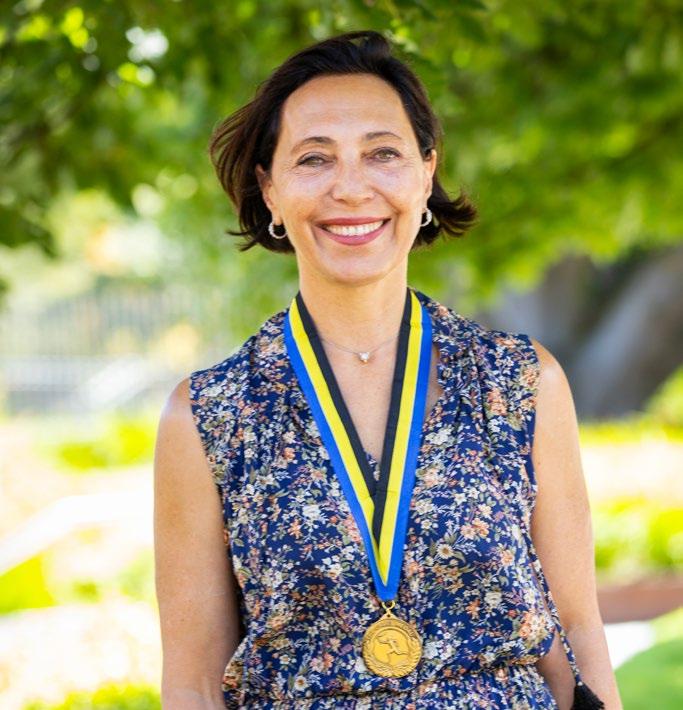

After that night, Toni started the Off Your Back charity, which over the last two decades has received over 300,000 preloved, good-quality coats to re-distribute to disadvantaged people in the community.
The organisation operates on a simple model that collects and gives. The initiative has evolved to include school collections, company collaborations, and ‘the invaluable contributions of individual volunteers who dedicate their time and efforts to the program annually’. About the many contributors, Toni said, ‘They find joy in knowing that their cherished items embark on a new
journey, bringing warmth and comfort to those who truly need them.’
Off Your Back now distributes coats widely, including to Youth Projects – a charity that provides front line support to young people and individuals experiencing disadvantage and homelessness – as well as to the Prison Network charity for ex-inmates, Salvation Army centres and a number of women’s shelters.
The simple, kind and selfless act of giving changes many lives.
If you want to learn more about Off Your Back, go to offyourback.com.au
Who will be the next Carey Medallist?
The Carey Medal Committee is always accepting nominations.
Any member of the Carey community is eligible – past or present students, staff or parents. Their achievements could be of a high profile or not, made in a short time or carried out over longer periods. They could be starting out in their community service journey, or have years of service experience. Visit carey.com.au/carey-medal for more information.
Be part of the future of Camp Toonallook
Rebekah Trachsel Head of Advancement
If you’re a Carey alum, chances are you’ve been to Camp Toonallook, Carey’s beautiful campus along Lake Victoria in the Banksia Peninsula.
Today, students in Years 4 to 7 experience Camp Toonallook annually to explore our 10 acres, which includes bush and tent camping sites, a kitchen and dining facility, three small residences for staff accommodation, an amenities block and a boat shed. I recently had the privilege of joining Year 6s at Toona in May and really immerse myself. This included being conscious of the environment with two-minute showers; learning about the Traditional Custodians, the Tatungalung Clan of the Gunaikurnai people; and kayaking – even capsizing a kayak into five-degree water!
Walking among it all, there is a deep sense of history and reverence. In fact, some of the structures have existed for nearly as long as Camp Toonallook!
Back in the 1960s, when Carey first acquired the site, our community raised funds to develop the land and
turn it into the campsite we know today. Parents even contributed money, time and materials resulting in the construction of facilities.
The site is basic, but it has served its purpose well – to provide an outstanding Outdoor Education experience for Carey students, grounded in teamwork, caring for each other and the environment.
Now, almost 60 years on, we’re asking our community to come together for Camp Toonallook once again. This time, we’re hoping to refresh the entire site, including purpose-built gathering spaces, a new outdoor chapel and sustainable irrigation systems.
Josh Edwards, Head of Outdoor Education, has outlined a budget of $200,000 to refresh the entire camp, and Carey will be able to fund half of this cost through our invested savings.
With your kind donation, we can uplift the camp so we can continue providing amazing experiences at Toonallook for decades to come.
Josh says it best:
Toona is an integral component of a Carey journey. For students and staff, it becomes more than a camp experience, it becomes a part of who you are. Ongoing support will ensure Toona remains powerful in its capacity as a place to offer these transformative experiences to our community.

Want to see Camp Toonallook in action?
Watch our video to discover more about the exciting activities and beautiful surroundings that make it so special. Watch the video

Camp Toonallook Community Milestones
Early foundations and land acquisition
Negotiations begin with Fred and Joan Barton for access to a 10-acre site on the Banksia Peninsula.
Carey is granted a 99-year lease through the Barton-Crees Memorial Trust, leading to the development of Camp Toonallook.
Pioneering spirit: the volunteer era



First unofficial camp and working bee held over the summer holidays. 1965
The first building, known as the base hut, is constructed on a concrete slab using Carey parents’ contributions of money, time and materials.
Fleet of eight kayaks, built by parent volunteers at the Kew campus, is transported to Toonallook.
First student camp (Year 7 boys) held, including a kayak expedition to Sperm Whale Head; students stay in tents with access to rudimentary facilities. 1967
Expansion and enrichment
Carey purchases an ex-charter boat and names it Toona Foam.
Main dining/kitchen complex, Lyall Hall, completed.
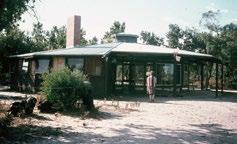
Open-air chapel is built overlooking Lady Bay.
Students raise $1800 at a spellathon to upgrade Toona Foam.
Resilience and rebuilding

Assessing the fire damage, 1978
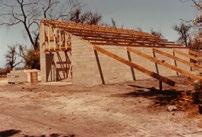
Rebuilding the boat shed after the fire, 1978
Bushfire destroys most buildings and equipment; redevelopment plans begin immediately, supported by insurance.
Parent volunteers raise $6000 for a fire truck; Fred and Joan Barton donate $2500.
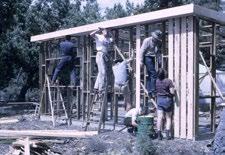
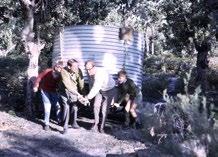
Parent volunteers complete new amenities. block with showers, toilets and septic system in time for Term 1 camp.
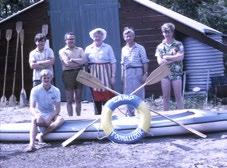

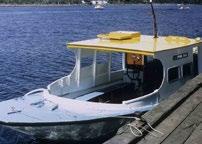
Year 7 students invited to design camp badge; John Thurman’s winning design, pictured left, is manufactured and presented to all Year 7 campers.
Girls first camp at Toonallook.
Continued growth and community support

Further staff accommodation constructed, including female staff sleeping quarters.
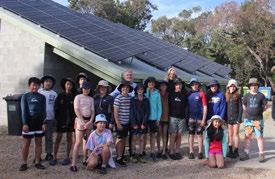
New solar array is installed on camp buildings, continuing a legacy of environmental stewardship and investment in the site.
Meet Don Maloney: lawyer by trade; volunteer at heart
Grace Phillips Alumni and Advancement Specialist
For over 60 years, the Maloneys have had a continuous connection to Carey. The first Maloney began a Carey education in 1963, and the most recent family member was a 2024 Valedictorian.
Don (1978) was Dux of Humanities, School Prefect and a Newnham House Captain. Post-school, he built a successful career as a lawyer, spanning many decades at top global firms. Don came back to Carey as a parent for Miren (2013) and William (2016) with his partner, Maria. This reignited Don’s close connection with the School and, as a committed and passionate member of the Carey community for over 49 years, Don has since dedicated much of his valuable time to volunteering for the Carey community. A lover of music and theatre, and having attended over 50 Carey musicals, Don was the President of the Carey Theatre Association in 2016. In addition, after being a committee member for a number of years, he is the newly elected President of the Carey Past Families Hub. It is of no surprise that Don is a well-known leader in the world of Carey volunteering and beyond.
While you can usually find Don at the Princess Theatre or Regent Theatre enjoying the latest musical productions and plays, Don has also been known to volunteer in the broader community, notably through his engagement with the Children First Foundation for over 12 years.
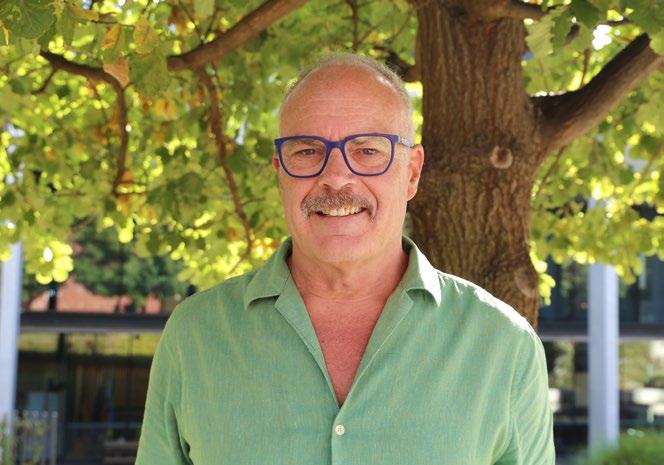
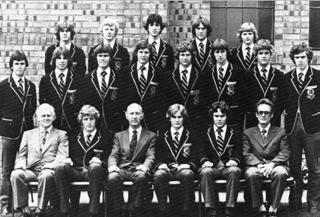
How to stay connected: The Past Families Hub
‘Now being semi-retired, there’s a great opportunity to be seeking out volunteer opportunities so I can give back and make use of my experience and expertise for the benefit of others,’ says Don.
Don believes that there are always significant opportunities to give back and contribute, whether through volunteering or through philanthropic endeavours. He believes that volunteering in particular is a significant and pivotal part in giving back to others.
The Past Families Hub, established in 2019, is an evolving community group that engages past parents and families with the School. Hub members are invited to various Carey community events such as the Art and Design Show and opening night of Senior School Musicals.
Comprising over 340 members, Don says, ‘Joining the Past Families Hub is a way of remaining connected, and a great opportunity for past parents and families to continue to be involved in the community.’
You can stay up-to-date or engage with the Past Families Hub through following @careypastfamilieshub on Facebook or Instagram or by emailing pastfamilieshub@carey.com.au
Carey’s unsung heroes
Carolyn Apostolou Chair of the Carey Heritage Committee
Carey Baptist Grammar School has been shaped by countless individuals whose contributions have often gone unrecognised. While many notable figures, such as those in positions of responsibility, have been honoured in the past, there are many others who work behind the scenes, significantly impacting our school community without ever stepping into the limelight. Recognising this, a movement began to honour these remarkable individuals. The Carey Heritage Committee has taken the initiative of compiling biographies of these unsung heroes, capturing their stories for future generations.
This collection is a tribute to those who have played a vital role in our school’s history since its founding in 1923. By sharing their stories, we both acknowledge their efforts and deepen our understanding of Carey’s rich heritage.
The collection is a work in progress, with many inspiring stories already recorded and many more waiting to be told. We invite the entire Carey community to contribute by submitting the names and stories of those who have made a difference. Whether it’s a teacher, student, parent or staff member, every contribution is valuable in building a comprehensive history of our school.
By contributing to this collection, you help ensure that stories like Bill’s are not lost to time. To submit a suggestion or share a story, please email archives@carey.com.au. Together, we can ensure these legacies are preserved for years to come.
You can read more stories on Carey Collections, at archives.carey.com.au

Bill Sandilands
Carey Staff, 1946–89
Bill Sandilands was Carey’s Groundsman: the curator of Sandell Oval and the Bulleen Sports Complex for an astonishing 40 years. He cared for the grounds and their surrounds as though they were his children.
Bill was a bachelor with few relations but a multitude of friends. Well-known and respected at Hawthorn Football Club, Bill passionately followed his beloved Hawks.
The Sandell Oval was larger then than it is now. There was an old scoreboard in the northeast corner, built on a storage space in which Bill kept his lawnmower and other tools. If the weather was inclement on Friday, he was known to sleep overnight in the toolshed in order to be on duty first thing in the morning. The ground had to be in prime condition for the Saturday game.
He spent some time in residence in a flat in the Gadsden Pavilion at Bulleen. In the spring of 1971, there was severe flooding and Bill used one of the School’s dinghies to row himself home at night.
On a hot afternoon in January 1946, two young men walked up the track through the trees leading from Wrixon Street to Urangeline. They had not met before, but soon discovered that each had been demobbed after war service, and that they were both being interviewed by the headmaster, VFO Francis, for a position on the staff. As they arrived at the house, one held out his hand, and said, ‘I’m Arthur’. The other replied, ‘I’m Bill’. ‘Best wishes, Bill; hope you get the job’. ‘Likewise, Arthur’. They were Arthur Sandell and Bill Sandilands. They both got their jobs: and Carey is very fortunate indeed that they did.
Written by David Morgan OAM (1961)
Air raid trenches, a rifle range and the cadets: life at Carey during World War I I
Helen Wolff Archivist
The war cast a long shadow over Carey, shaping school life in ways never imagined. With 511 former Carey students serving in World War II and 40 losing their lives, the impact was profound and deeply felt within the school community.
To prepare young men for potential military service, in 1940, Carey established its own Cadet Corps, with 65 boys donning uniforms under the leadership of Lieutenant Cecil Shinkfield, a Carey parent and experienced officer. Training was rigorous. On the site just northeast of the Quad, a rifle range was constructed. The sharp crack of gunfire would have echoed as boys learned to handle weapons – a solemn preparation for what lay ahead, as some would go on to use these skills in real battle.
That same year, the war also changed the teaching staff. Many of the school’s best teachers enlisted, leaving gaps that were difficult to fill. Some who returned carried physical and emotional scars. Arthur Sandell, former School Captain and Carey teacher, and after whom Sandell Oval is named, came back from battle permanently injured, walking with a limp for the rest of his life. His presence was a stark reminder of the sacrifices made.
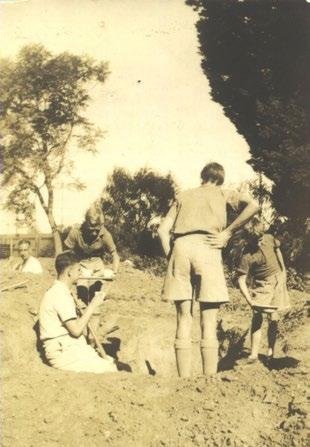
All schools in the Commonwealth were required to dig air raid trenches and run air raid drills.
Preparing for airborne attacks
Under Commonwealth Government regulations, schools were required to prepare air raid trenches to protect against potential attacks. At Carey, these trenches stretched from Laycock House (the site of the old boarding house, where the De Young Centre for Performing Arts now sits) almost all the way down to the former Preparatory School (where the Centre for Creativity and Collaboration is now). With enthusiastic support from parents, staff and senior boys,
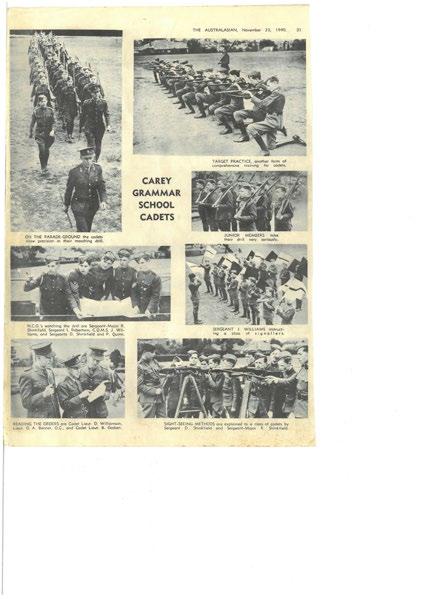
Carey’s Cadet Corps was featured in The Australasian Post magazine on 23 November 1940.
Kew Council loaned picks and shovels and as the trenches took shape, the Carey Ladies’ Auxiliary provided refreshments, ensuring the workers were sustained through their labour.
Teachers who usually guided students in Latin or Mathematics now led them in hard physical work; every hand had a role to play in the war effort.
Air raid drills became a part of daily school life. A rapid ringing of the school bell signalled boys to quickly and quietly make their way to their
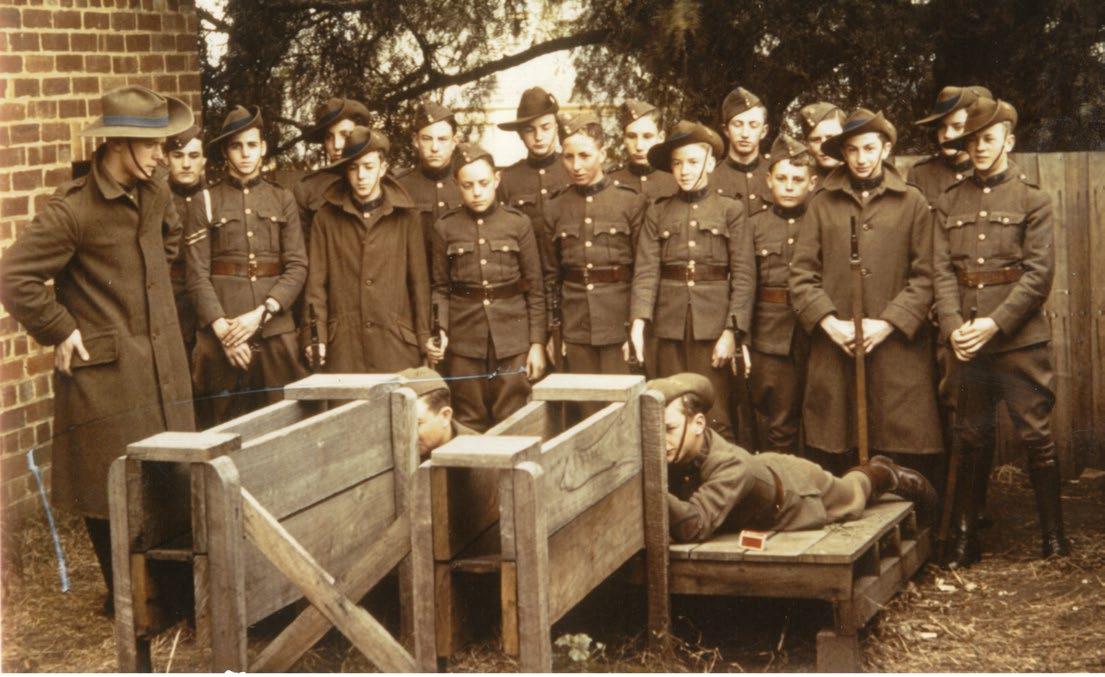
Carey’s Cadet Corps trained at school to prepare for potential military service. This included learning to shoot at the School rifle range.
They sat, restless but subdued, waiting for the all-clear signal before returning to their lessons, the weight of the war pressing down even in moments of stillness.
allotted shelters, where they stood back-to-back. Each student was required to carry a lead pencil and a piece of soft rubber or cork to place between their teeth – precautions to keep their mouths open and prevent internal injury or burst eardrums from a potential blast. They sat, restless but subdued, waiting for the all-clear signal before returning to their lessons, the weight of the war pressing down even in moments of stillness.
A community united by purpose
Beyond the school grounds, Carey students were deeply connected to the conflict. Many older boys enlisted and some wrote letters back to the School sharing vivid accounts of their experiences on the front lines.
These letters were often read aloud in assemblies, stirring both pride and sorrow among students and staff.
Boarders also contributed to the war effort, volunteering in the kitchen to help cover shortages of domestic staff. Through these small but significant actions, the entire Carey community found ways to support one another during difficult times.
Boys’ social service fundraising was redirected to war-related activities. They ardently collected scrap metal and wastepaper. Boys came to school laden with empty Weeties boxes, empty tins (2800 of them) and such strange things as parts of lawn mowers, car and bicycle tyres, and bits of spare metal and old saucepans. The collected metal was repurposed
This article was first read at the Senior School Anzac Day Service in Term 2 this year.
2025 marks 80 years since the end of World War II. Lest we forget.
for military equipment reinforcing the idea that even young Australians were directly helping soldiers on the front lines. Students also knitted socks and rugs that were sent to soldiers on active service.
The Carey Ladies’ Auxiliary played a crucial role in maintaining morale, carefully assembling Christmas parcels for alumni on active service. These included homemade Christmas cakes and copies of the Carey Chronicle, small but meaningful connections to home. The 1945 OCGA annual meeting minutes recorded that many servicemen expressed great pleasure at receiving these parcels.
Amid the drills and war preparations, Carey remained a school. Laughter still echoed in the corridors and lessons continued. Annual Speech Nights and Inter-House Sports went on and friendships endured. The war years at Carey were marked by resilience and camaraderie – a time when the school community pulled together in ways never seen before.
Donations to the archive
January to May 2025
List of donors
Mr Robert Bruce (1964)
Students enjoying gymnastics equipment in the Gadsden Gymnasium, c. 1956.
Mr Andrew Buckmaster (1997)
Booklet: Responsible education: an introduction to Carey Baptist Grammar School, 1989.
Mr Owen Jenkin (1959)
Carey prospectus, 1929.
Carey Chronicle, Dec 1955–July 1959.
Mr Andrew Jones (1974)
Carey is 16mm film master, 1973.
Mrs Kayela Lamba
Various school uniform items, c. 1980s–90s.
Mr Richard Lindstrom (1975)
Photograph of donor preparing to compete in the APS Athletics 4 x100m Open relay at Olympic Park, 1975.
Mr Paul McKenry
Various photographs depicting life at Carey, 1987–89.
Mr Alex Papanotas
35mm colour slides depicting Carey life, 1978.
Ms Kath Perrin
John Perrin’s academic reports, 1945–49. Carey songs, hymns, readings booklet, 1948. OCGA Boarders Reunion program, 17 February 1996.
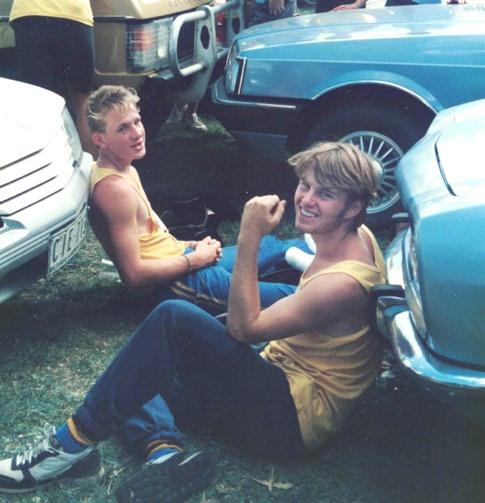
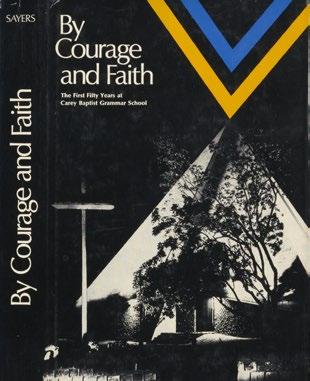
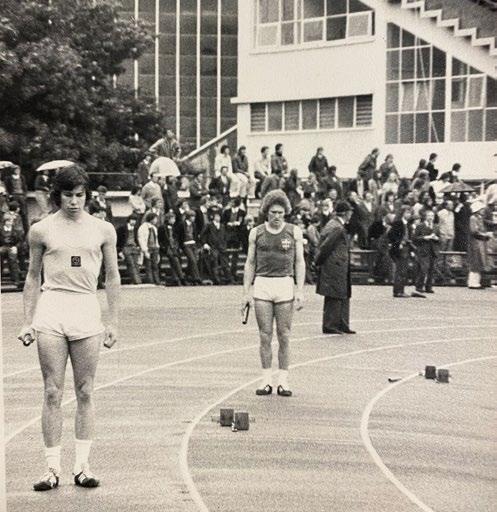
Preparing to compete in the 1975 APS Athletics Open Relay at Olympic
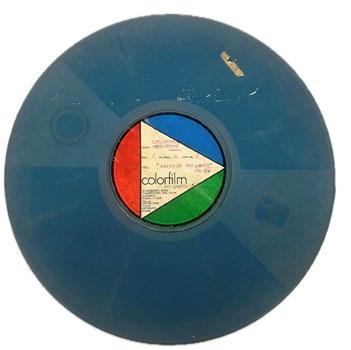
Above: Carey is 16mm film master, 1973. Donated by Mr Andrew Jones
Ms Kath Perrin donations continued
Speech Night programs, 1952, 1957, 1958.
Items relating to the OCGA 1956 reunion held on 1 March 1996.
School diaries, 1946–49.
By courage and faith: the first fifty years of Carey Baptist Grammar School by Stuart Sayers, 1973.
William Carey: the shoemaker who became the father and founder of modern missions by John Brown Myers, 1887.
Book prize awarded to JM Perrin (Form V scripture), 1949.
Invitation and order of service for Carey’s new performing arts facility ‘turning of the sod’ ceremony, 11 September 2008.
Felt pennant: navy, gold and black with Carey motto and emblem of runner carrying the torch, c. 1940s.
Carey Chronicle, June 1945–Dec 1949.
Presentations to the Carey Archives booklets, 2001–3.
Correspondence relating to appointment of Philip De Young, c. 2001.
Program for William Shakespeare’s Julius Caesar presented by Strathcona and Carey, July 1949.


Introducing our new president
Kaushini Fernando Alumni and Community Manager
This year, we welcome Paul McKenry (1989) to the position of President of the Old Carey Grammarians Association (OCGA).
Paul, a proud Carey alum, reflects on his time at the school as a formative chapter in his life. The strong sense of community, lifelong friendships and values instilled during those years have continued to influence his personal and professional journey.
His connection to Carey has remained strong over the decades. Both of his children, Skye (2013) and Max (2018), are Carey alumni, and his wife, Simone, recently completed 16 years of service at Carey Junior School – Donvale campus. The family’s long-standing involvement reflects their shared appreciation for Carey’s values and the lasting impact of its community.
After leaving Carey, Paul studied at Monash University before establishing a diverse career across the corporate sector and private enterprise. With more than 30 years of experience, he has worked across a range of industries and roles, gaining broad expertise in business strategy, leadership and organisational development. Today, he partners with private businesses and leadership teams to help them overcome challenges, scale effectively and create structures for sustainable success. His focus extends beyond commercial outcomes to include positive leadership and personal growth within teams.
Now stepping into the role of President of the OCGA, Paul is honoured to take on this position during a significant milestone – the OCGA’s centenary.
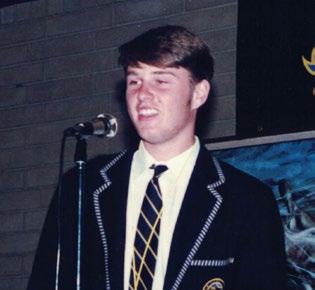
Outside of work, Paul enjoys spending quality time with family and friends, many of whom are also part of the Carey community. He shares a love of cooking with Simone, and they enjoy creating meals together to share with loved ones. He also spends time on the Mornington Peninsula and is a keen supporter of the local live music scene, regularly attending gigs and discovering new artists.
Now stepping into the role of President of the OCGA, Paul is honoured to take on this position during a significant milestone – the OCGA’s centenary. He approaches the role with


enthusiasm and gratitude, acknowledging the work of those who have served before him, and the importance of building strong connections among alumni across generations, and strengthening ties within the broader school community.
As he looks to the future, Paul is committed to ensuring the OCGA remains a vibrant, inclusive and supportive network for all its members. With a deep sense of purpose, he looks forward to holding the torch high, and serving the alumni with courage and faith, alongside his fellow council members.
Seussical the Musical: Oh, the places OCPAC will go
Joey Phyland (2018) Director, Seussical the Musical
In October 2024, the Old Carey Performing Arts Club (OCPAC) brought to life Seussical the Musical at the Ian Woolf Auditorium (IWA), in a production that united alumni, past families and the broader Carey community in a truly memorable way. OCPAC has long served as a creative haven where Old Carey Grammarians and members of the broader community can come together, sharing their passion for the performing arts. Since its founding in 2009 by Carey alumni Joshua Robson (2008) and Matthew Cox (2008), with their friend Josh Gavin, the club has blossomed into a cherished part of Melbourne’s amateur theatre scene.
Inspired by the wonderfully whimsical world of Dr Seuss, Seussical the Musical tells the tale of Horton the elephant, who faces the challenge of protecting a small town living on a speck of dust, while also guarding an abandoned egg left by the flighty Mayzie LaBird. Throughout the story, the themes of friendship, loyalty and the power of community shine through, resonating deeply with those who came to watch.
This year, OCPAC made a strong effort to reconnect with Carey alumni, following the success of the Musicals Through the Years centenary concert in 2023. Alumni were integral to every aspect of the production, including Joey Phyland (2018), Director; Olivia Jackson (2016), Musical Director; Josh Drake (2023), Assistant Director; and Sam Ponsford (2017), Producer; as well
as an array of impressive alumni cast members: Quinn Cameron (2020), Shan D’Cruz (2021), Josie Harris-Wetherbee (2011), Will Maloney (2016), Finn Mezzetti (2020) and Amy Thyer (2014).
The success of the production would not have been possible without the tireless support of Carey volunteers, staff and families, and the OCGA, who worked behind the scenes. Their efforts ensured that every element, from lighting to costumes, came together seamlessly. Rehearsing in Metcalfe Hall and performing in the IWA provided a nostalgic and fitting setting for the show, helping to create a sense of belonging and pride for alumni as well as opening Carey’s doors to new faces.
The musical was met with overwhelming praise from the audience and further reinforced the vibrant role of the performing arts at the School. The show’s success also led to multiple nominations for amateur theatre awards, including four Lyrebird nominations, and the cast was honoured to perform ‘Oh, the thinks you can think’ at the awards ceremony earlier this year.
This production not only showcased the wonderful talents of those involved but also strengthened the bond between Carey’s past and present community. It stands as a testament to the lasting legacy of the arts at Carey – a reminder that the magic of theatre can unite us all, no matter how much time passes.
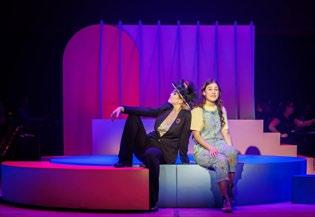
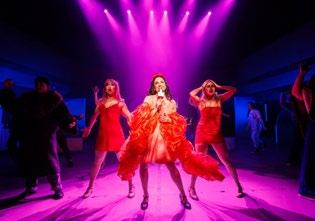
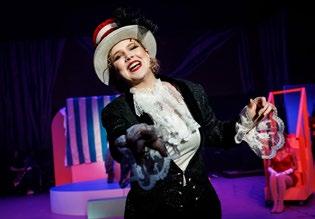
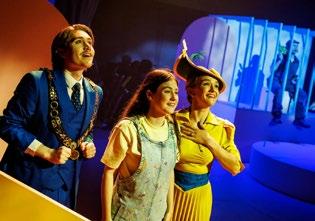
Where are they now?
Dr Hugh Kirkman AO (1959)
After Year 12, I went to the University of Melbourne on a R S Fox Forestry Bursary. That year, I failed dismally, my only excuse being that I came second in the Victorian Marathon with all the time spent training instead of studying. I loved athletics at school and I continued until 2013 when I had an accident on my motorbike which interfered with my balance. I ran for athletic clubs in three states and, in 1961, I won the Queensland Marathon.
I worked for Colonial Sugar Refining Company (CSR) for 12 years, first as a timekeeper in a sugar mill in Cairns, QLD, then in Murwillumbah in NSW. CSR then sent me to study Agriculture at the University of Queensland, which I passed in an enjoyable four years. I continued to be active and represented the university in several different sports.
After a year working on the technical field staff at Condong Sugar Mill, I left
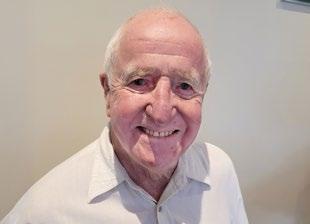
and started at CSIRO as a technician. I joined a project to investigate the life history of prawns caught in Moreton Bay near Brisbane. Thousands more juveniles were caught in seagrass beds than in muddy or sandy areas, but no one in Australia had done much research on seagrass. I investigated its taxonomy, biology, life history and abundance in Australia. In 1976, I funded a worldwide trip to visit other seagrass scientists, many of whom I still have contact with. I gained a French Government scholarship
Dr Amanda Cole (1985)
After studying for a Bachelor of Medical Science for three years and my first post-graduate clinical year at the Alfred and Prince Henry’s hospitals, I encountered a turning point. I owe it to a sympathetic Dean of Medicine who saw that, though I was succeeding, I was suppressing my passion for music and languages.
I began a music degree and a Diploma of Modern Languages where I studied French, German and Italian and was training to be a classical singer. But, when my father died suddenly and early, my desire for a life on the stage became less of a priority than having a family. I graduated and began coaching opera singers in European languages, supported by a Churchill Fellowship. Another pivot came after my mother died, also too young. I moved to
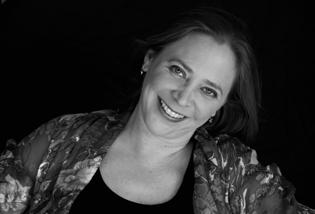
New Zealand with my partner, where I had a minor, but satisfying, solo career; completed a Master of Music Performance at the Victorian College of the Arts; and had a baby. I discovered that New Zealand is one of the best places in the world to have a baby; the post-natal support was incredible – particularly helpful given the absence of my own parents.
The day after my baby was born, I was offered a PhD scholarship by the
to study seagrass in Marseille and another to work on algal physiology in Helgoland, Germany.
Over 25 years at CSIRO, I progressed to Principal Research Scientist, and wrote 37 publications, including reports, book chapters and papers.
In 1998, I was employed as the coordinator of the Coordinating Body of the Seas of East Asia with the United Nations Environment Program (UNEP). This was a most interesting five years in which I developed marine environmental strategies for 10 Southeast Asian countries.
Since then, I have continued as a marine environmental consultant. I review papers for journals and was employed by the Port of Melbourne to report on its dredging proposal.
Congratulations to Dr Kirkman for being named an Officer of the Order of Australia (AO) in 2025!
University of Otago. I completed it eight years later, by which time we had moved to Queensland. Next followed the long preparation for a book on the same topic as my PhD: the nexus between music, performance and education.
Today, I am an Adjunct Research Fellow at Griffith University, a teacher of the IB at a selective high school in Brisbane, and a member of one of Brisbane’s elite vocal ensembles, all of which I balance with being the mother of a teenager and the partner of an academic.
Moving to Carey in Year 11 was a significant step in my life that helped me to break out of my comfort zone and identify my strengths. It also gave me the confidence to adapt to change and overcome challenges, and taught me that my life and my career didn’t need to follow a set path or fit a mould.
Ruby Long (2013)
I will always think fondly of my time at Carey. Some of my formative moments were spent portraying a broad range of characters from Sharpay (High School Musical) to Eponine (Les Misérables) in Carey musicals.
Returning to Carey in 2023 to perform in the Centenary Musicals Through the Years concert reminded me of the sense of community at the School.
I chose not to pursue performing professionally, and instead followed my passion for medicine and biology through a Bachelor of Biomedicine at the University of Melbourne.
I developed problem solving, forensic analysis and investigative skills at university, leading me to a career in federal law enforcement. Graduating in 2018 from the Australian Federal Police Recruit College in Canberra as a police officer, I returned to Melbourne

to work on complex fraud, corruption, organised crime, aviation and national security investigations.
I ultimately found my passion working in victim-based crime, and as manager of the Human Trafficking and Slavery investigations team, spearheading the disruption, prevention and prosecution of modern slavery in Australia. I became specialised in advanced offender and vulnerable witness interviewing and received extensive training in traumainformed practice to acquire evidence.
Simon Newnham (1991)
I finished Year 12 at Carey in 1991 after starting in Year 7. Many of my family attended Carey, and I was a part of a terrific year group. I have a lot of happy memories from that time, including of school sports, the growing drama program, bellowing the School Song at assembly, Newnham House activities and competitions, school camps, debating and public speaking and some excellent teachers. I am lucky to remain in touch with a number of friends from Carey.
My wife, Lorraine, and I moved to Canberra in 2003 when I joined the Australian Public Service. We had three amazing kids who are now young adults – Alice, Will and Claire.
My career since Carey has been focussed on public policy, particularly international, economic, national security and legal. I’ve worked for the

Governor of Victoria as a lawyer and then in three Federal Government Departments – Foreign Affairs and Trade, the Attorney-General’s Department and now at the Finance Department. Career highlights have included work on the Afghanistan Evacuation in 2021, being Australia’s Ambassador to APEC, representing Australia at the G20 and World Trade Organisation, helping establish the Robodebt Royal Commission and the National Anti-Corruption Commission,
As a human trafficking and slavery subject matter expert, I often presented on emerging issues at government conferences and national round-tables, participated in research to drive policy and legislative reform, and engaged with domestic and international stakeholders for the National Action Plan to Combat Modern Slavery.
My time at the AFP culminated in my detective training in 2024, for which I was awarded the Dux of Program, the Federal Bureau of Investigation Award for Excellence, which I am very proud of.
I have since moved to the private sector, and am currently managing complex risk, financial crime and misconduct investigations at NAB.
I am very excited, however, to step into perhaps my most important role yet as a mother, with my husband and I expecting our first child in July 2025.
and helping defend Australia’s interests in international legal cases. I have worked closely with a number of Ministers and Prime Ministers (pictured: me with former Deputy Prime Minister Kim Beazley and former Prime Minister Malcolm Turnbull) and other world leaders, and I even met the late Queen Elizabeth II and Prince Philip.
As part of this career, I have served overseas at Australia’s Embassies in Geneva and in Washington DC. We have wonderful family memories from these overseas adventures – including the fact that our son Will and daughter Claire were born in Switzerland!
While lots of different things have contributed to my personal and professional experiences, I feel lucky that some of my foundations were built by the teachers, friends and opportunities I had at Carey.
1975 50-year reunion

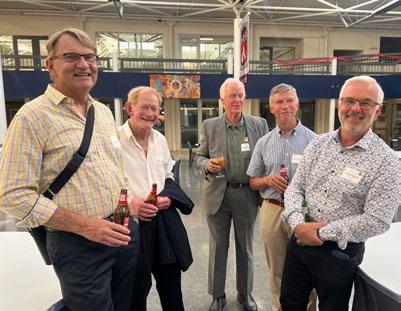
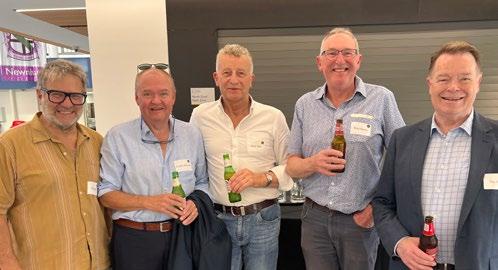
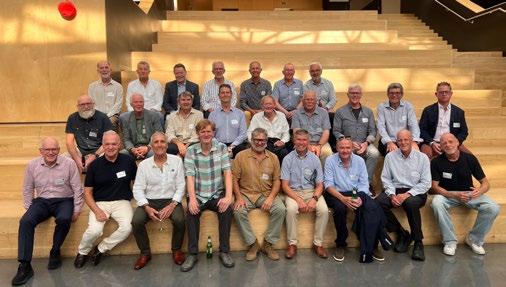
Founders Day Luncheon

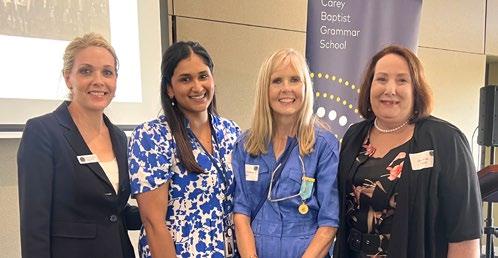

1985 40-year reunion


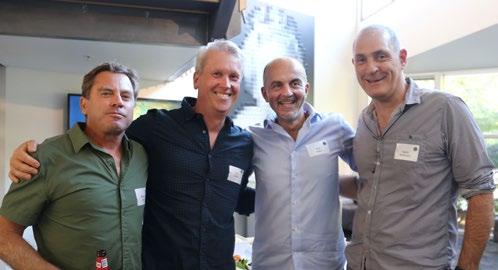
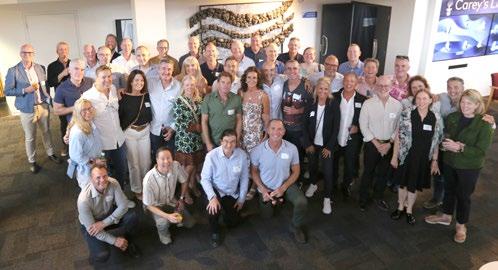
International Women’s Day Dinner
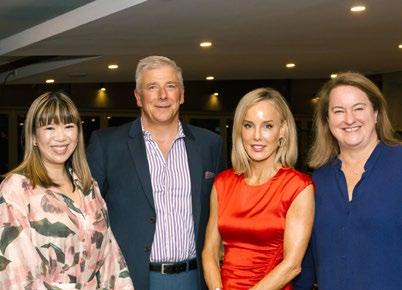

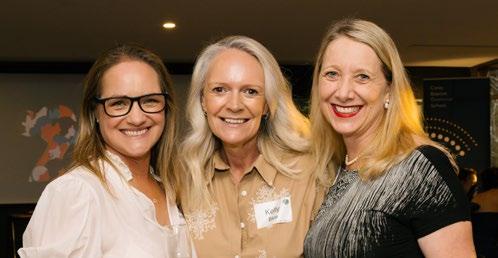
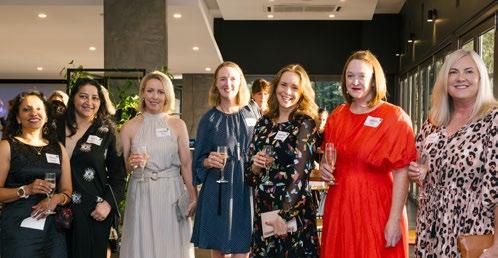
1995 30-year reunion



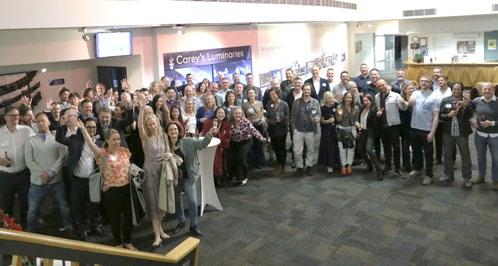
Young Alumni Night


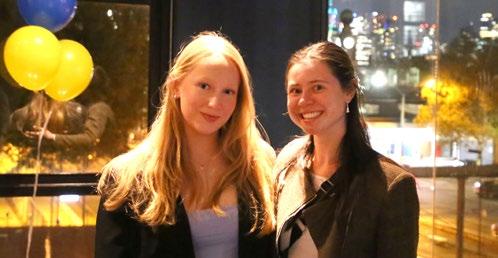

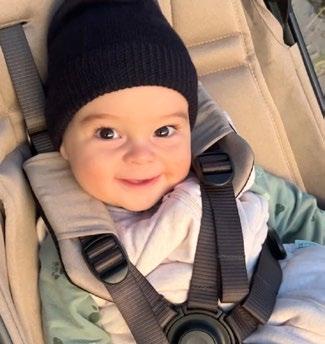
Gill
5 September 2024. A son for Sam Gill (2005) and Libby Britten.

Andrew Peter Stavrinidis
22 November 2024. A son for Chloe Stavrinidis (Lazaroy, 2004) and Nick Stavrinidis, and a brother for Steven and Mary.
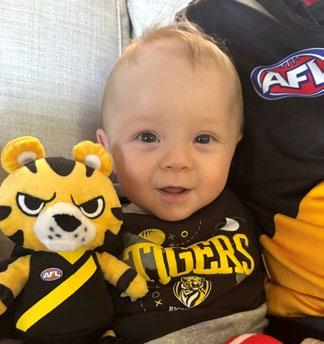
Adams
17 September 2024. A son for Luke Adams (2011) and Yasmine Luu, and a cousin for Samuel Adams.
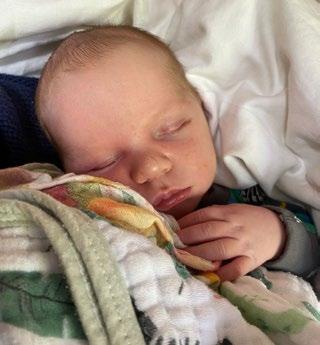
Colin Daniel Hamley
26 February 2025. A son for Nic Hamley (2007) and Clare Hamley, and a brother for Greta.
Are you expecting a future Carey Grammarian?
Carey receives a high volume of applications for enrolment. We encourage you to apply for your child as early as possible after birth. For more information about enrolment, and to apply online, go to www.carey.com.au
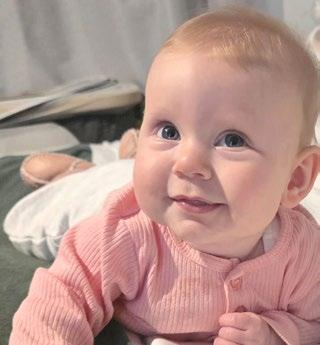
18 October 2024. A daughter for Alexandra Ord (2010) and Rebecca Ord.

Harry Anthony Kachrimanis
21 March 2025. A son for Anthea Tsaousis (2013) and Sean Kachrimanis.
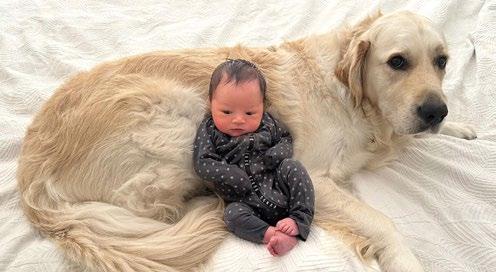
Samuel Adams
6 April 2025. A son for Chris Adams (2014) and Jacelyn Adams, a cousin for Spencer Adams and a companion for Cosmo the dog!
In memory of Jeffrey O Thomas
Richard Thomas (1992), with Georgia Dunshea (1994) and Harley Thomas (1998)
The Carey community was deeply saddened by the passing of Jeffrey Owen Thomas in December last year.
Jeff was a student at Carey from 1959 to 1964. He was Captain of Moore House in the Junior School, an ‘outstanding performer’ in the Junior School Open Cricket XI and sang in the Junior School choir. In the Senior School he played U15 Football and was selected for the First XVIII in Year 11.
After leaving the School, Jeff ‘Cool’ Thomas became passionately involved with both the Old Carey Football Club and the Old Carey Cricket Club. He joined the OCGA Council in 1985 and was soon elected Vice-President.
He joined the Carey Board as an OCGA representative in 1986 and was appointed Chairman in 1991, a role in which he served with distinction until 1999. Under Jeff’s leadership, alongside Principal Dr Ross Millikan, the School was restructured into Junior, Middle and Senior School and several infrastructure projects were implemented to support the restructure and growth of the School.
Jeff has had a profound impact on the Carey community. In recognition of his outstanding service to the Carey community, Jeff was appointed as an Honorary Life Member of the School Board and the Old Carey Cricket Club, and an Honoured Life Member of the Old Carey Grammarians Association. In addition, the Senior School quadrangle was named the Jeffrey O Thomas Quadrangle in his honour.
In 1981, Jeff and his colleague Peter Jackson formed Jeffrey Thomas & Partners (JT&P), a full-service Chartered Accounting Firm. Jeff was Managing Partner of JT&P until his retirement in 2011. During his time at JT&P, Jeff grew the firm to a practice
of five partners and 30 staff. In 2019, JT&P named an accounting scholarship in Jeff’s honour, awarded to a Year 12 Carey leaver each year.
He also served on several Boards, including as:
• Chair of Cathy Freeman Foundation
• Deputy Chair of ANSVAR Insurance
• Director of Bangarra Group
• Director of Coffey International Ltd
• Chairman of Advisory Board of Slade Group
• Advisory Board of Dorevitch Pathology
• Chairman of Asian Region of Polaris International, Chartered Accountants.
Aside from his sporting achievements at school and with Old Carey, Jeff enjoyed sporting success in other areas. He had a competitive spirit, determination and self-belief. As a cricketer, he valued his wicket highly and was a crafty and attacking left-arm spin bowler.
In 1968, he joined the Monash Blues Football Club while studying Economics. The following year he assisted Monash Blues’s return to A-Grade and won the Goal Kicking Award in both 1968 and 1970. He went on to coach the club.
Jeff was also a keen golfer and achieved a handicap of nine at the age of 74! He was a member at Kew Golf Club and Commonwealth Golf Club and served on committees at both Clubs.
Jeff married Pauline Thomas (née Hastie) in 1971 and enjoyed 53 years of marriage until his passing. Jeff and Pauline had three children who all attended Carey: Richard Thomas (1992), Georgia Dunshea (1994) and Harley Thomas (1998). He had eight grandchildren: Chloe (2022), Charlie (2023), Lachie (2027), Ella (2028), Tom, Alby, Teddy and Will, who are looking forward to starting at Carey soon.

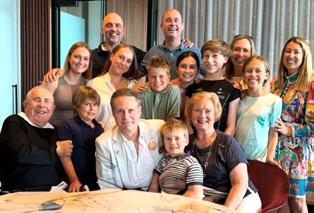

Jeff was a caring, passionate and genuine man who gave so deeply of himself to support others and bring people together.
On 29 January, the Carey community gathered for a Thanksgiving Service, along with Jeff’s family, friends and colleagues. More than 700 attended and several hundred watched online. The Thomas family is extremely grateful for the generosity of the Carey community through this difficult time.
In memory of Kylie Taig
Tanya May, Katelyn McQuiggan, Francesca Olhert, Jo Leech and Amanda Siva
Kylie Taig joined the Carey community in 2008 as a Year 7 class teacher, Science and Mathematics teacher, and Mentor in Middle School Moore. From day one she made her mark with her bubbly personality and can-do attitude. In the classroom, she was an outstanding educator adding colour and flare to class activities. She balanced this fun with a deep care for all her students and the desire to nudge them toward their potential.
Kylie loved working at Carey as she believed in community, often saying, ‘It takes a village to raise a child’. In her role she touched all corners of the School and knew everyone by name. She would work for hours and hours resolving problems and creating solutions for staff. When asked why she was working into the night, she would reply, ‘It makes me happy to help people’.
As the Head of Learning Innovation, she continued to assist and inspire. In 2019 and 2020 she led the School through the transition to Canvas and kept Carey steady across the waves of lockdowns and remote
In memory
learning. She coached and supported colleagues to deliver more engaging online learning, and her expertise was renowned far beyond the School. Notably, she delivered the keynote at the International Canvas Conference in 2023.
Kylie was a kind, inspiring and generous colleague. She was a devoted mother and wife whose children’s lunchboxes were a creative work of food art. She was a very dear, special friend to so many who had the privilege to share both her professional and personal life with her.
In 2023, Kylie said the following to Jono and the SLT about digital learning: This all started with the vision ... Change is not easy, and I have been so enormously proud of the teachers at this school who are open to learning and trying new things ... we have only just begun our journey. I’m so excited to see where we can go from here. Where the School goes from here will indeed be shaped by Kylie; we will always remember our beautiful friend.

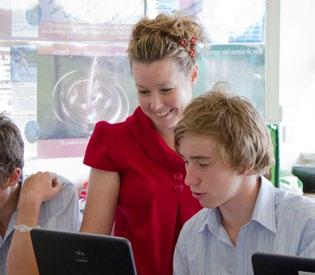
We extend our sincere condolences to the family and friends of the following people:
Kylie Taig (Staff) on 1 December 2023
Richard Harrison (1975) October 2024
David Reilly (1979) on 23 October 2024
Barrie Peel (1959) on 23 November 2024
Dr Ian Manning (1958) on 28 November 2024
John Bills-Thompson (1957) on 7 December 2024
Jeffrey O Thomas (1964, past Chair of the Board) on 20 December 2024
Peter Maplestone (1972) on 23 January 2025
Russell Sloan (1963) on 5 March 2025
Dr Ian Hansen OAM (1972, past Board member) on 20 April 2025
Nicholas Blitz (1969) on 25 April 2025
Philip Graeme Potter (1969) on 26 April 2025
Alumni Calendar 2025
1 August Class of 2020 5-year reunion
19 August Networking Night
5 September Class of 2015 10-year reunion
17 September Esteemed Luncheon (40+ years reunion)
18 October OCGA Centenary Dinner
16 November Community Memorial Service
21 November Golf Day
Please refer to the OCGA website at ocga.com.au for more events and the most up-to-date details relating to a particular scheduled event. If you have any inquiries, please contact Alumni and Community Manager, Kaushini Fernando, at communityengagement@carey.com.au
Contacts
Senior School seniorschooloffice@carey.com.au
Middle School
middle@carey.com.au
Junior School – Kew campus jskew@carey.com.au
Junior School – Donvale campus donvale@carey.com.au
Carey Sports Complex – Bulleen bulleen@carey.com.au
Principal, Jonathan Walter principal@carey.com.au
Community Engagement communityengagement@carey.com.au
Archives archives@carey.com.au
Advancement advancement@carey.com.au
Admissions admissions@carey.com.au
Kew campus
ELC, Junior, Middle and Senior Schools
349 Barkers Road
Kew Victoria 3101 Australia
Telephone: +61 3 9816 1222
Donvale campus
ELC and Junior School 9 Era Court Donvale Victoria 3111 Australia
Telephone: +61 3 8877 8500
Connect with Carey
Website: carey.com.au
Intranet: careylink.com.au
Facebook: @CareyBaptist
Instagram: @CareyGrammar
Connect with the OCGA
Website: ocga.com.au
Email: ocga@carey.com.au
Facebook: @OldCarey
LinkedIn: CareyGrammar
Instagram: @oldcareygrammarians

Help upgrade Camp Toonallook!
In the beautiful Banksia Peninsula, Camp Toonallook is Carey’s 10-acre Outdoor Education campus. It has been beloved by students since the 1960s thanks to our generous community.
Learn about our upcoming Camp Toonallook upgrade on page 30.
You too can impact Camp Toonallook experiences for our students in the years ahead by making a gift today!
Make your gift now!
